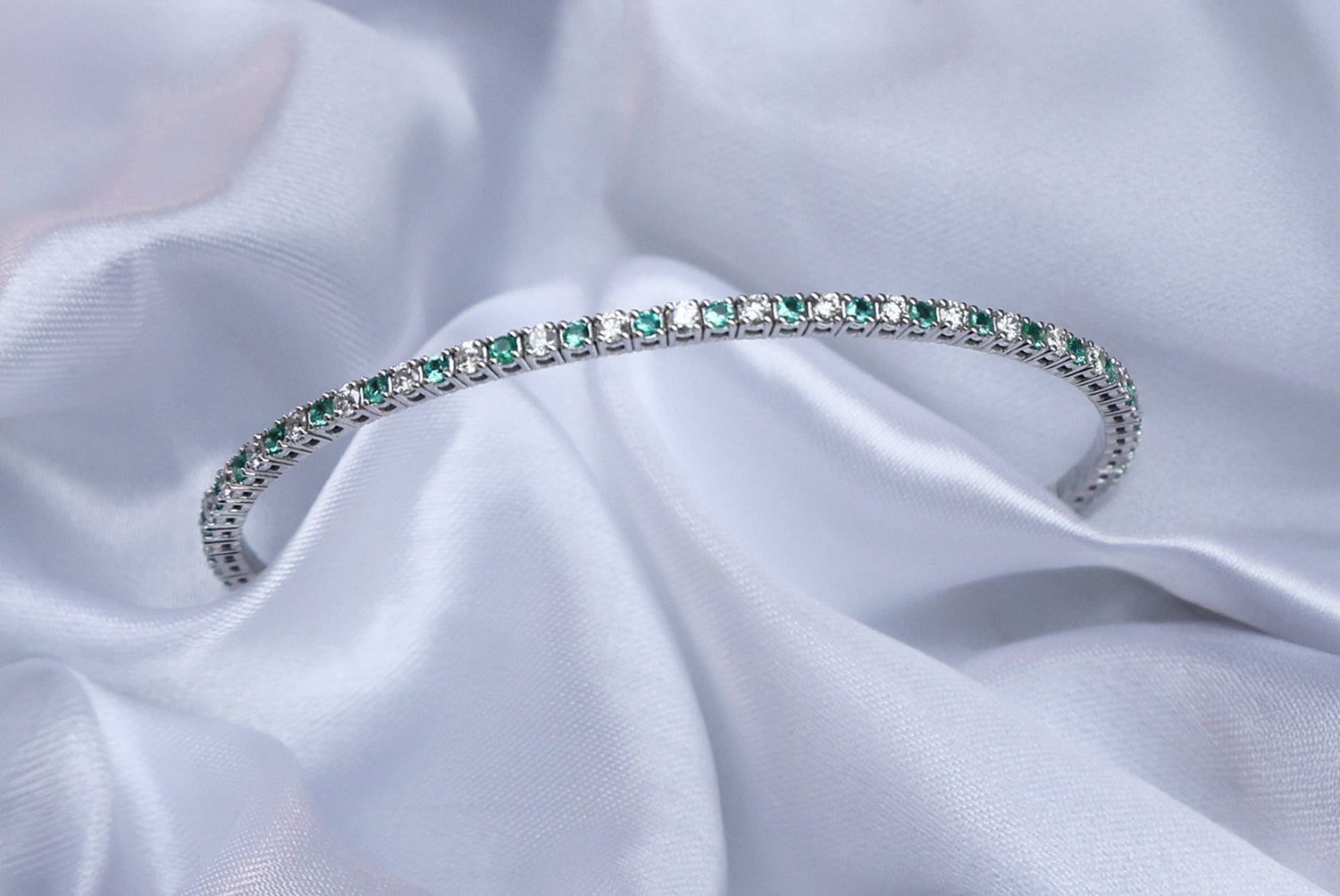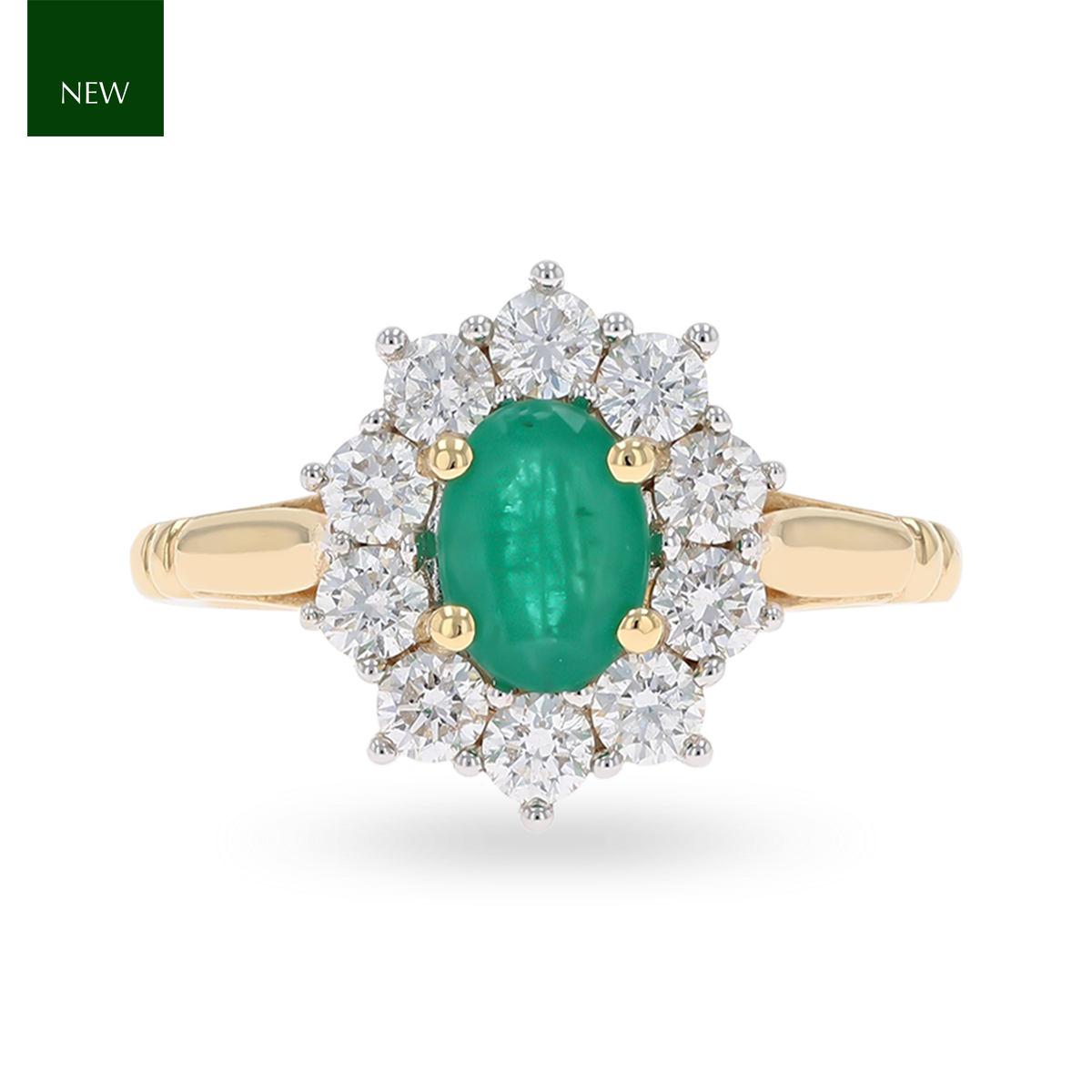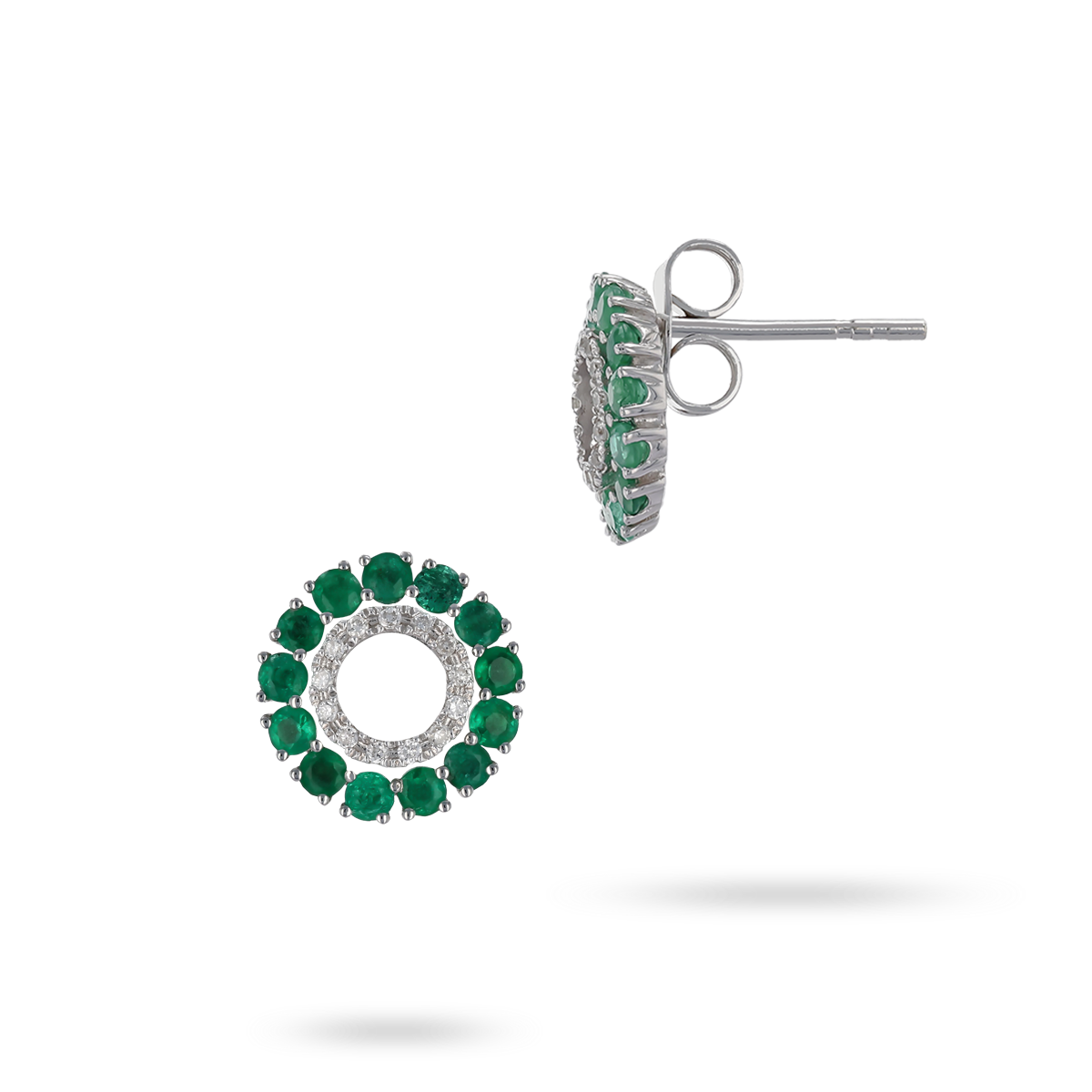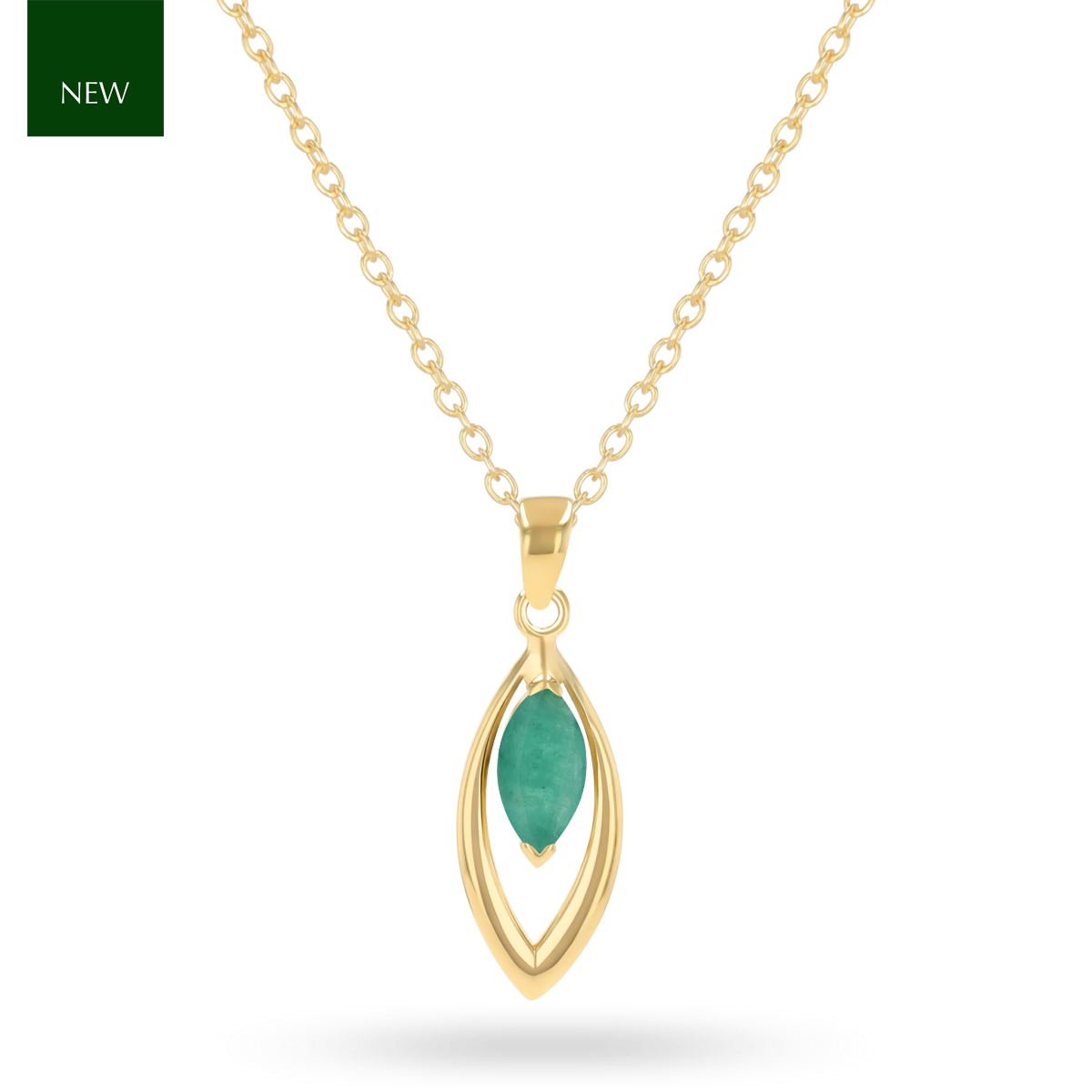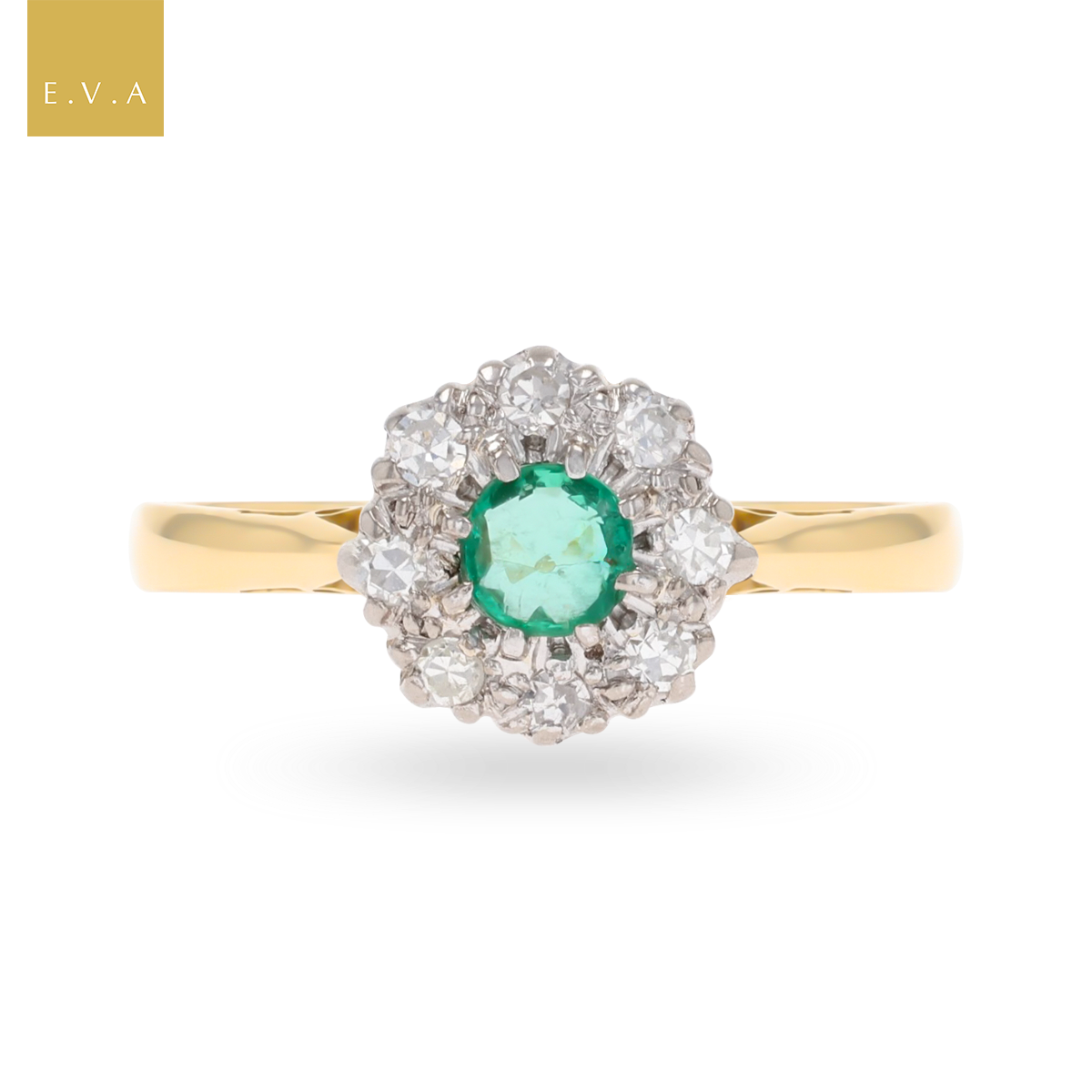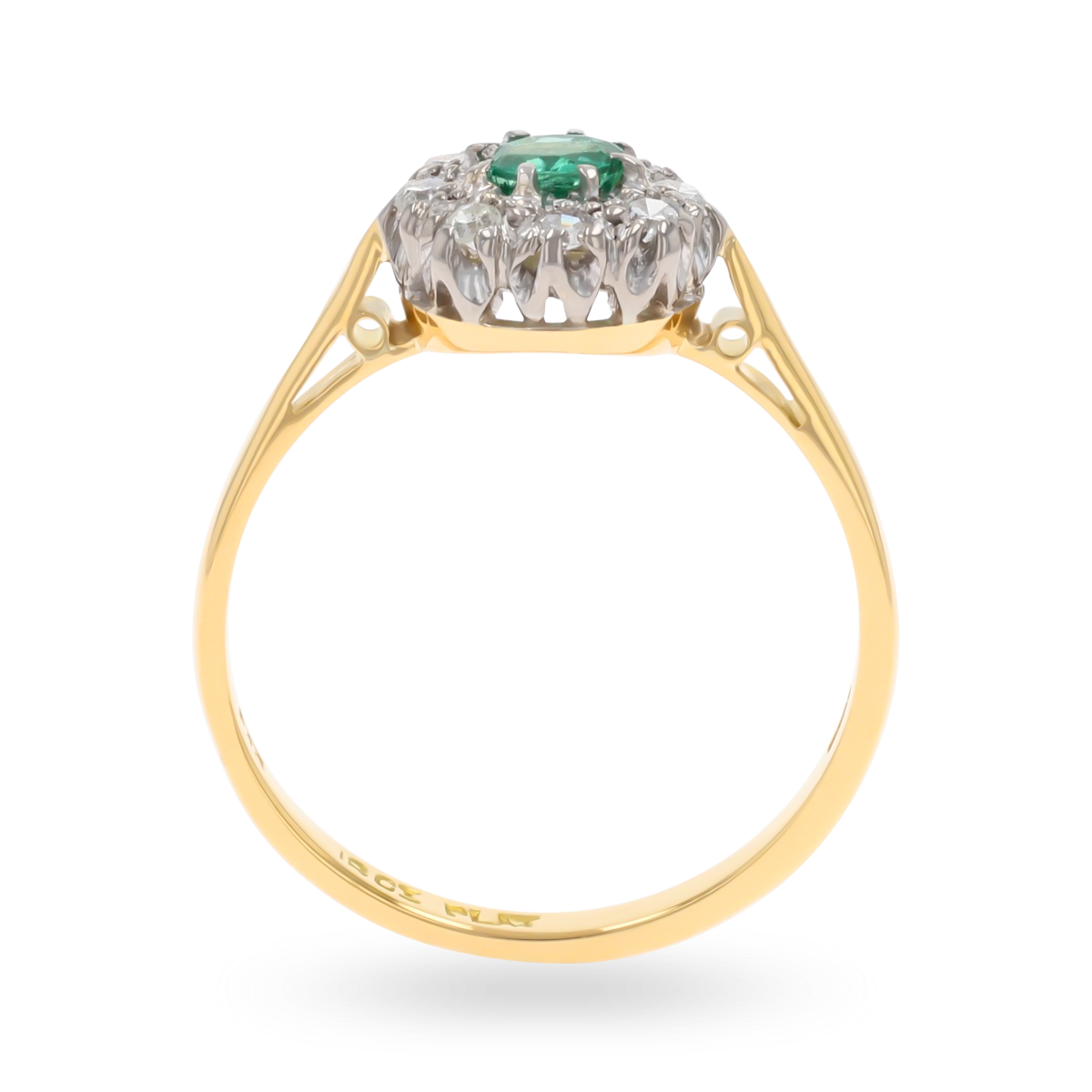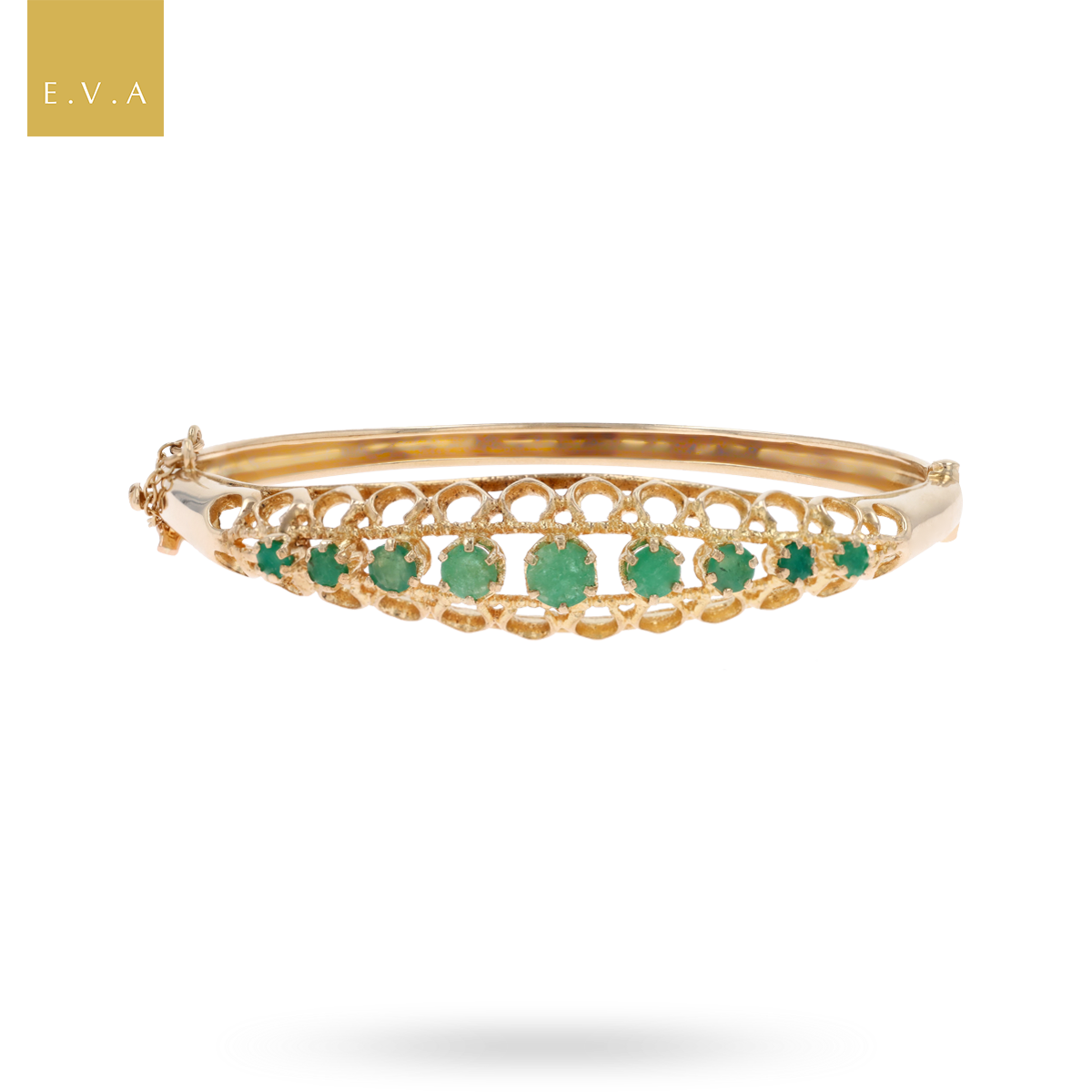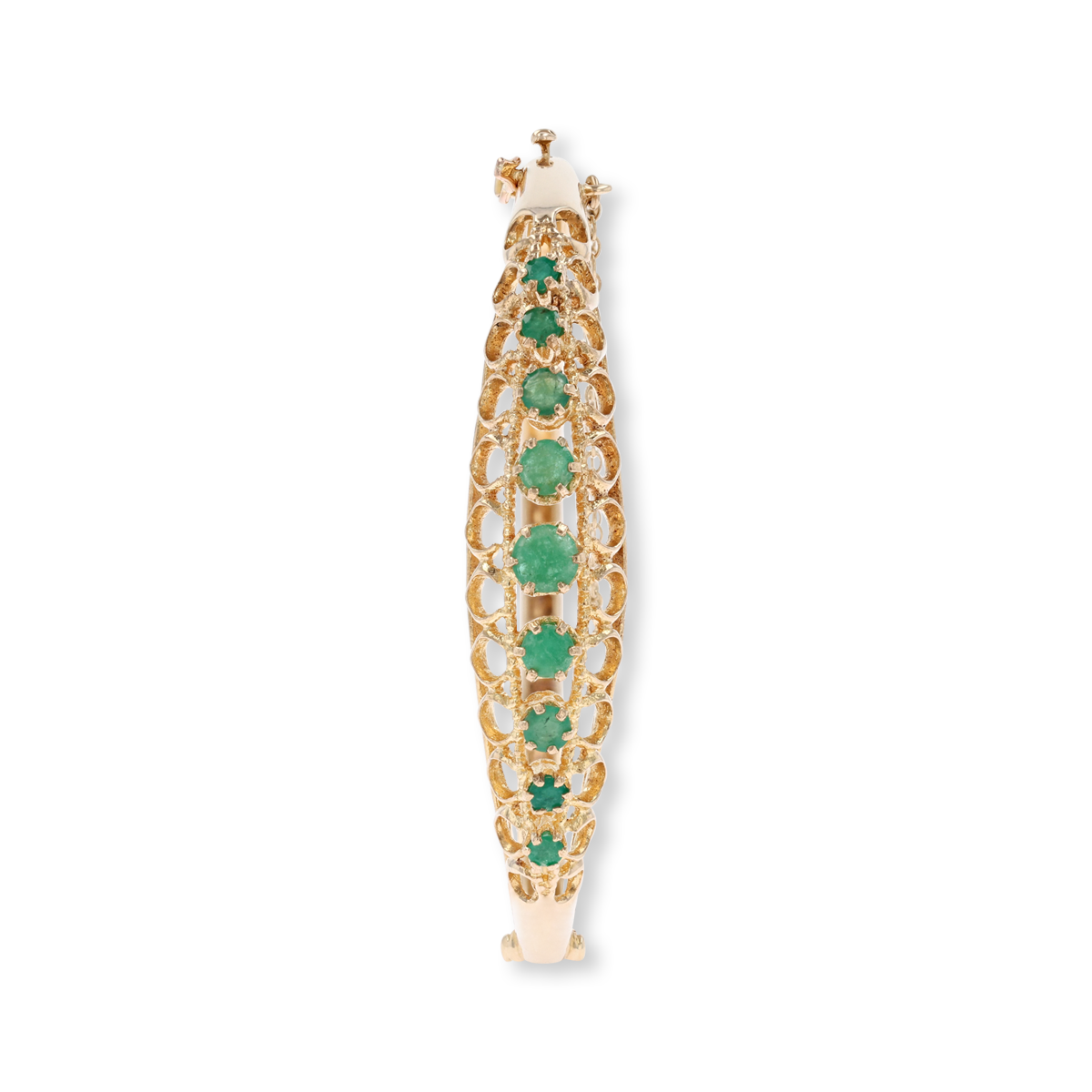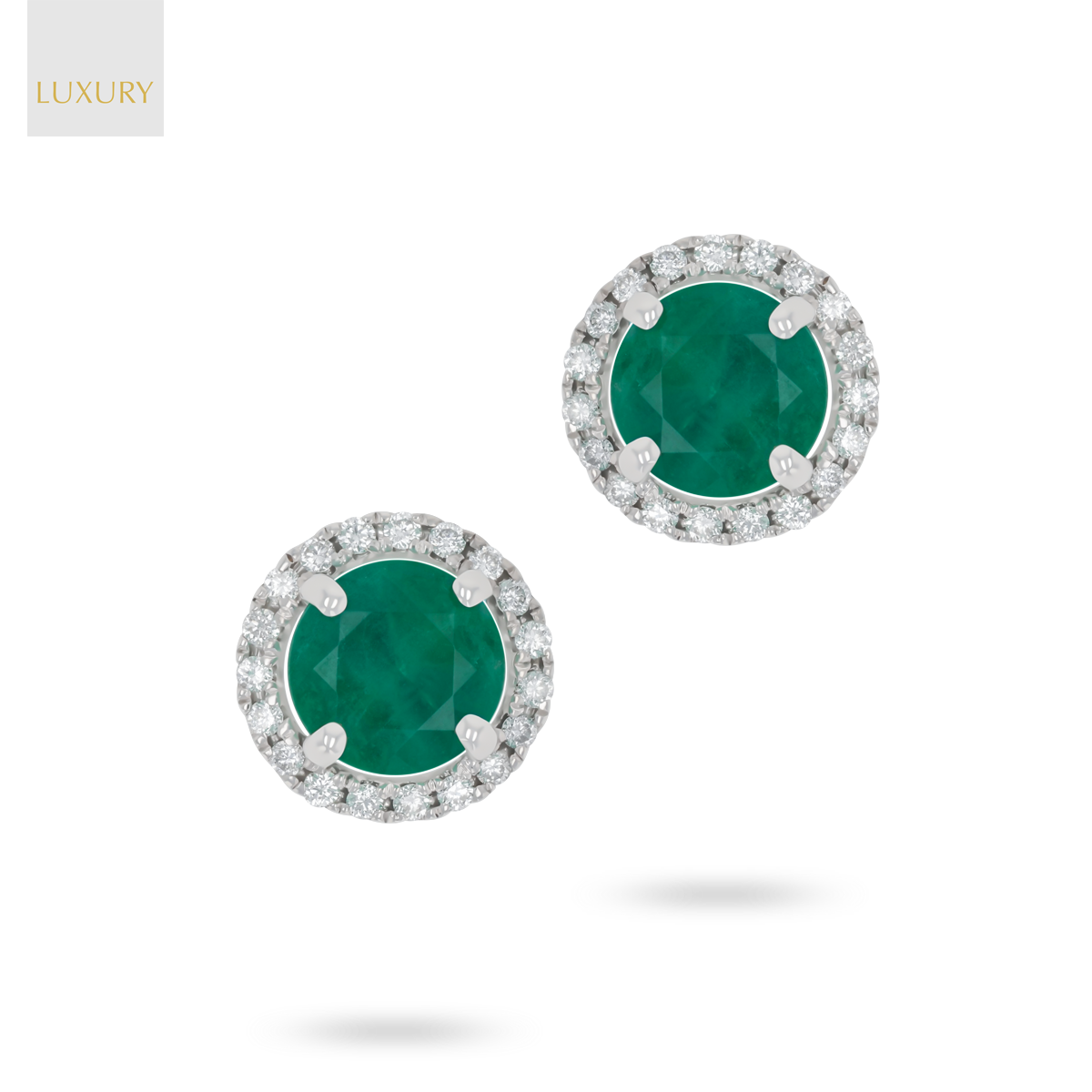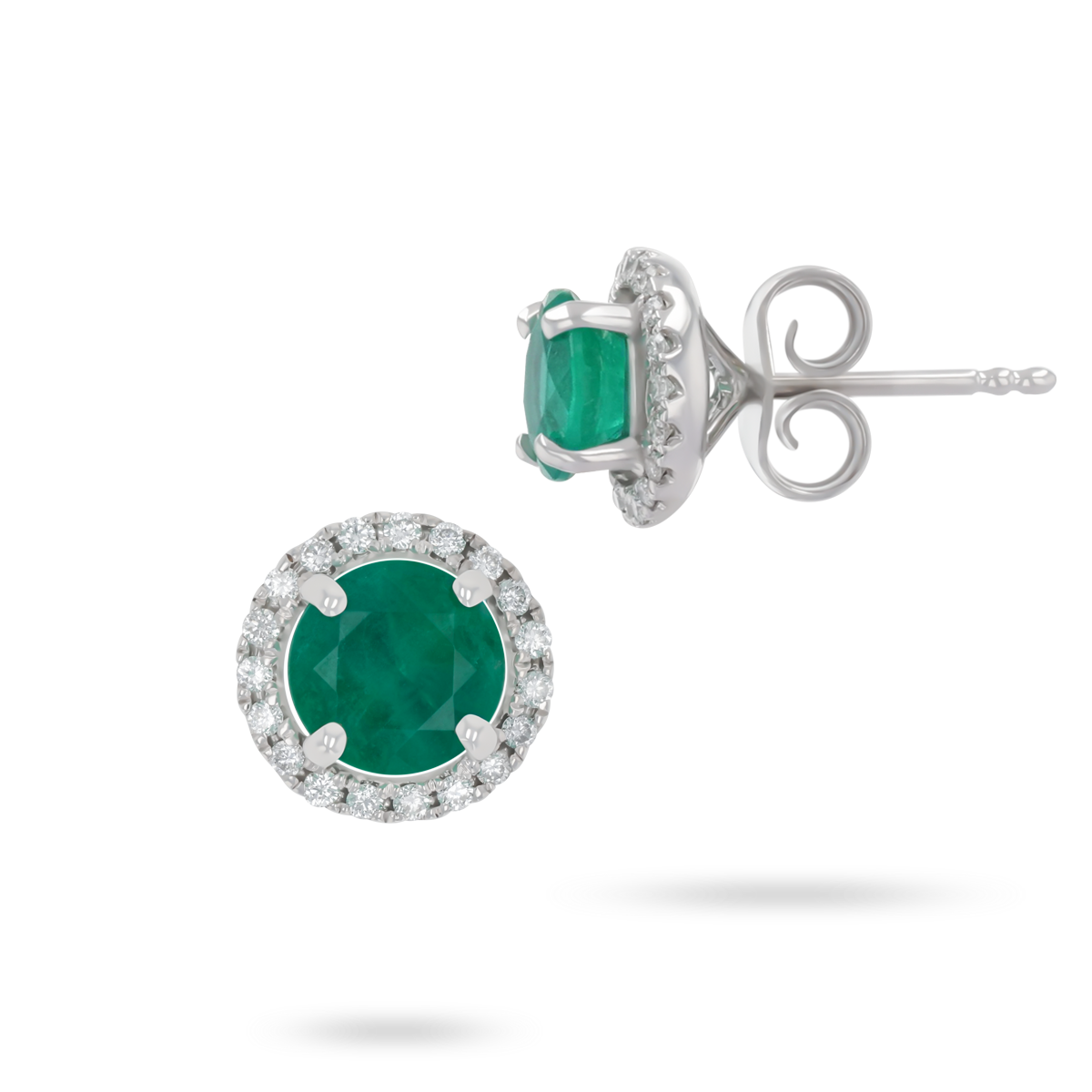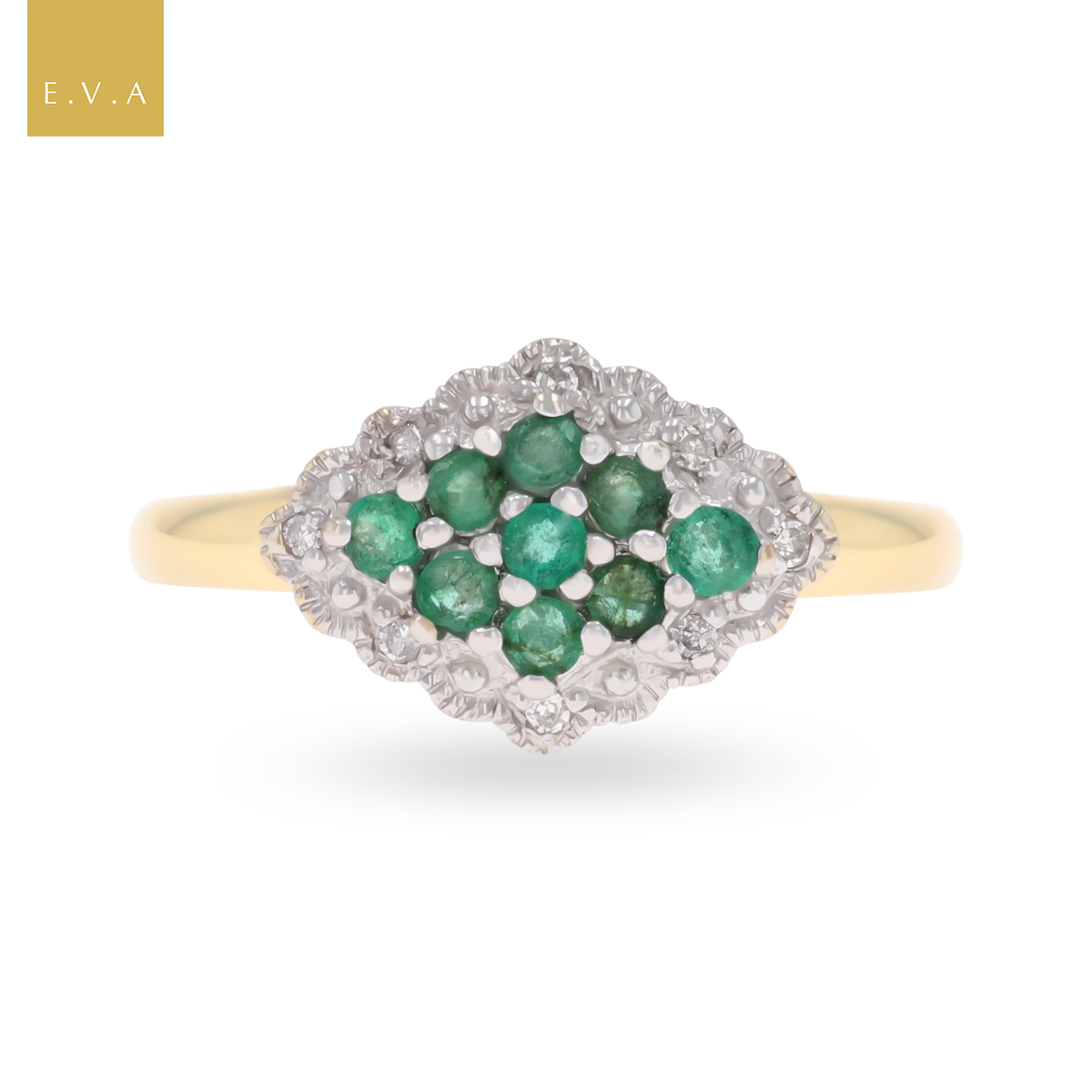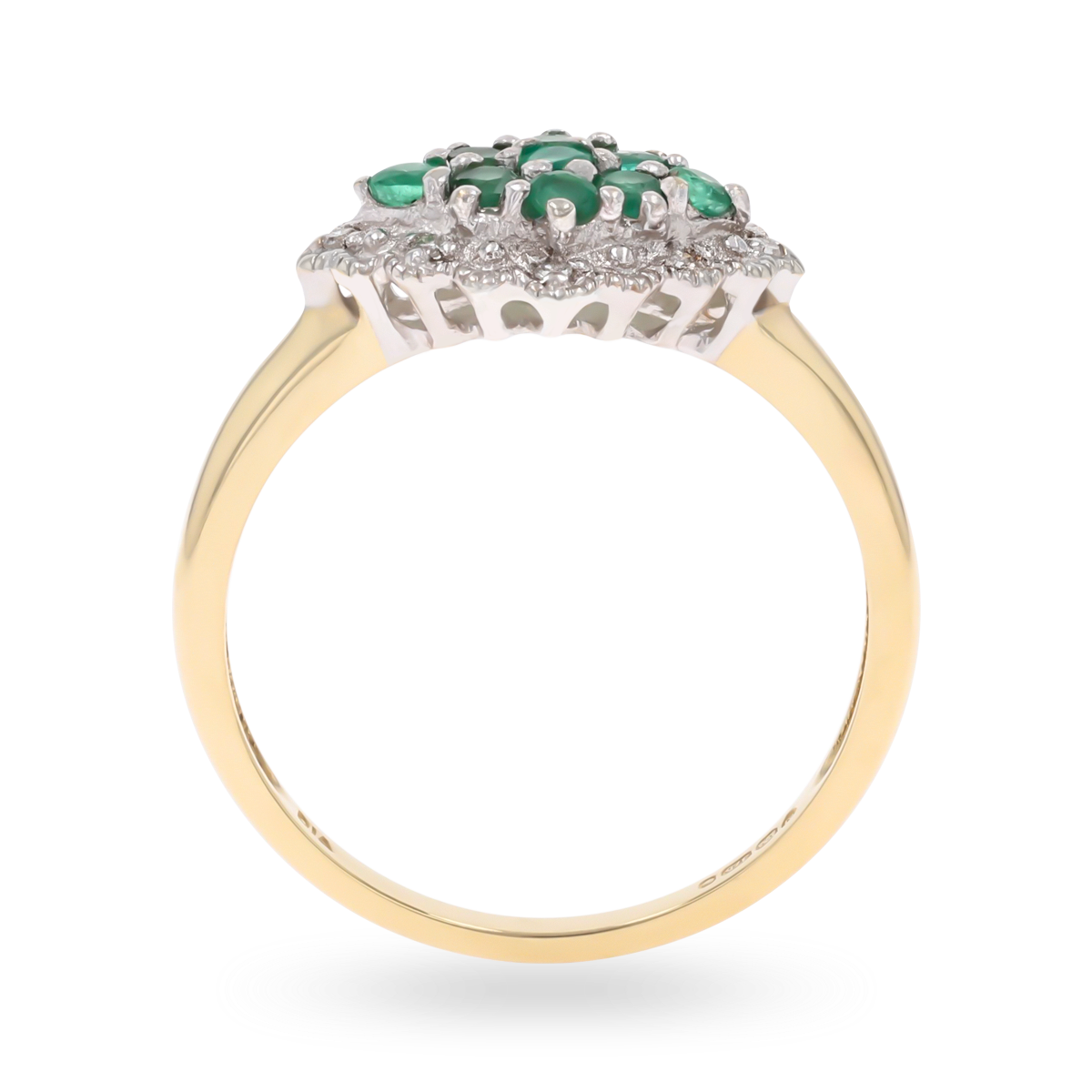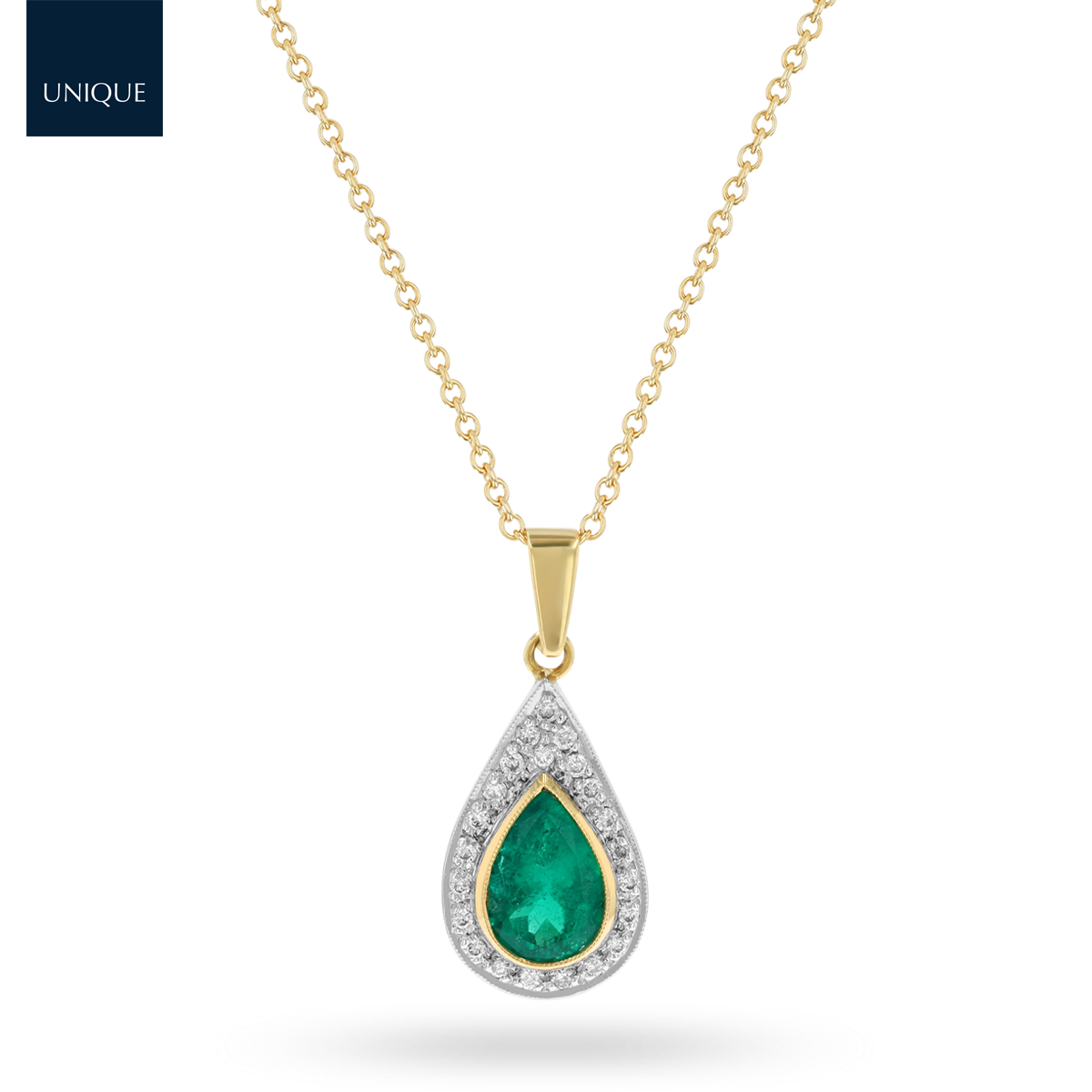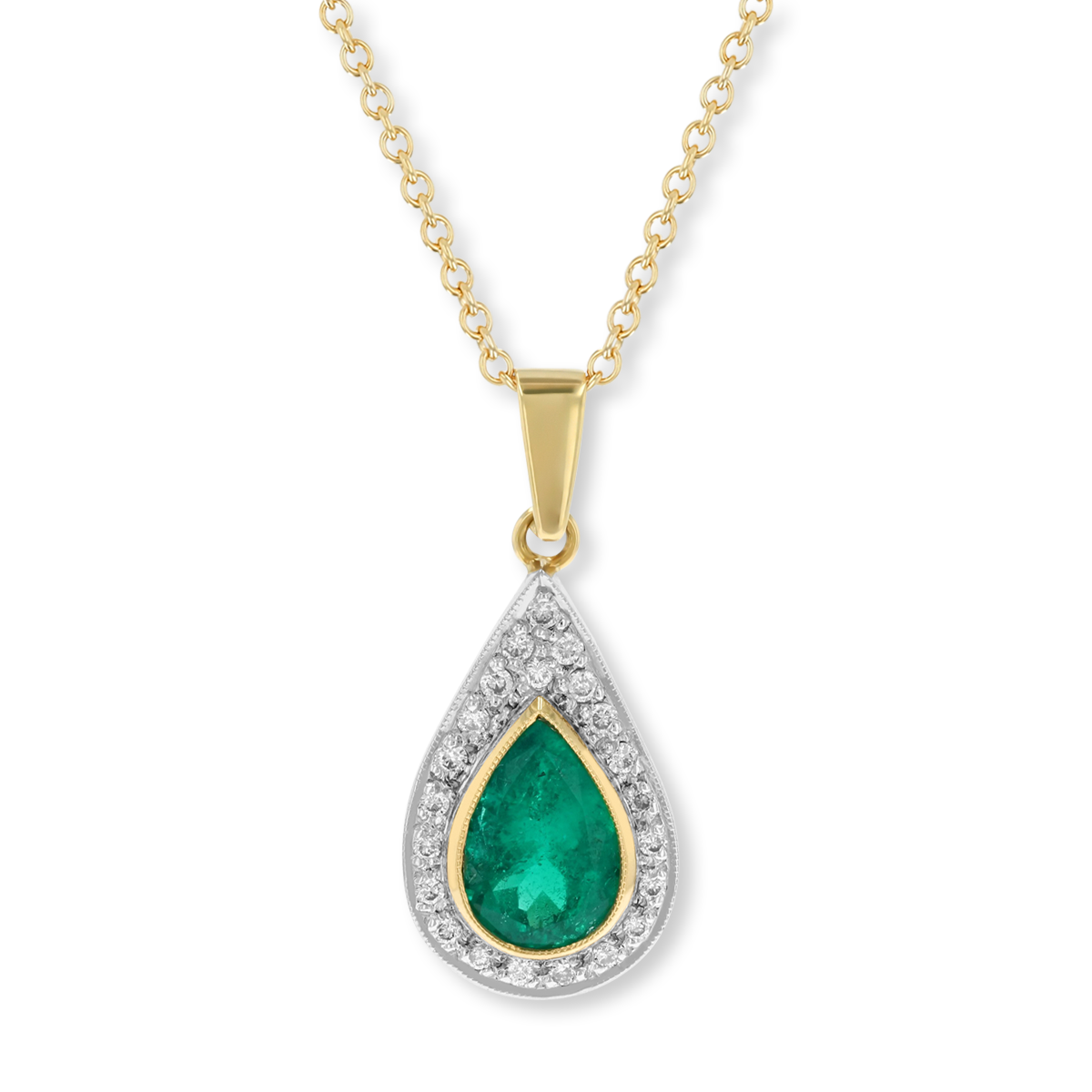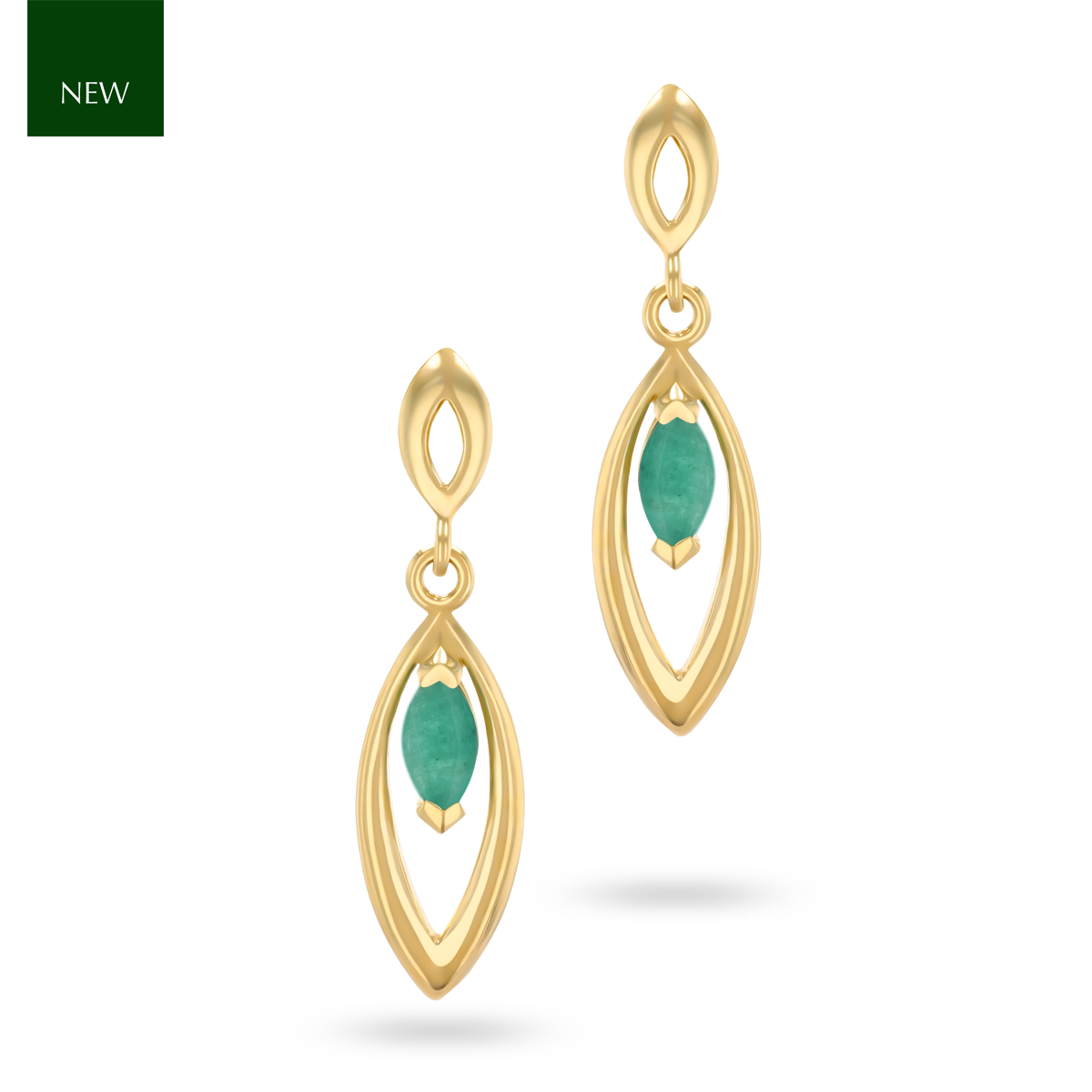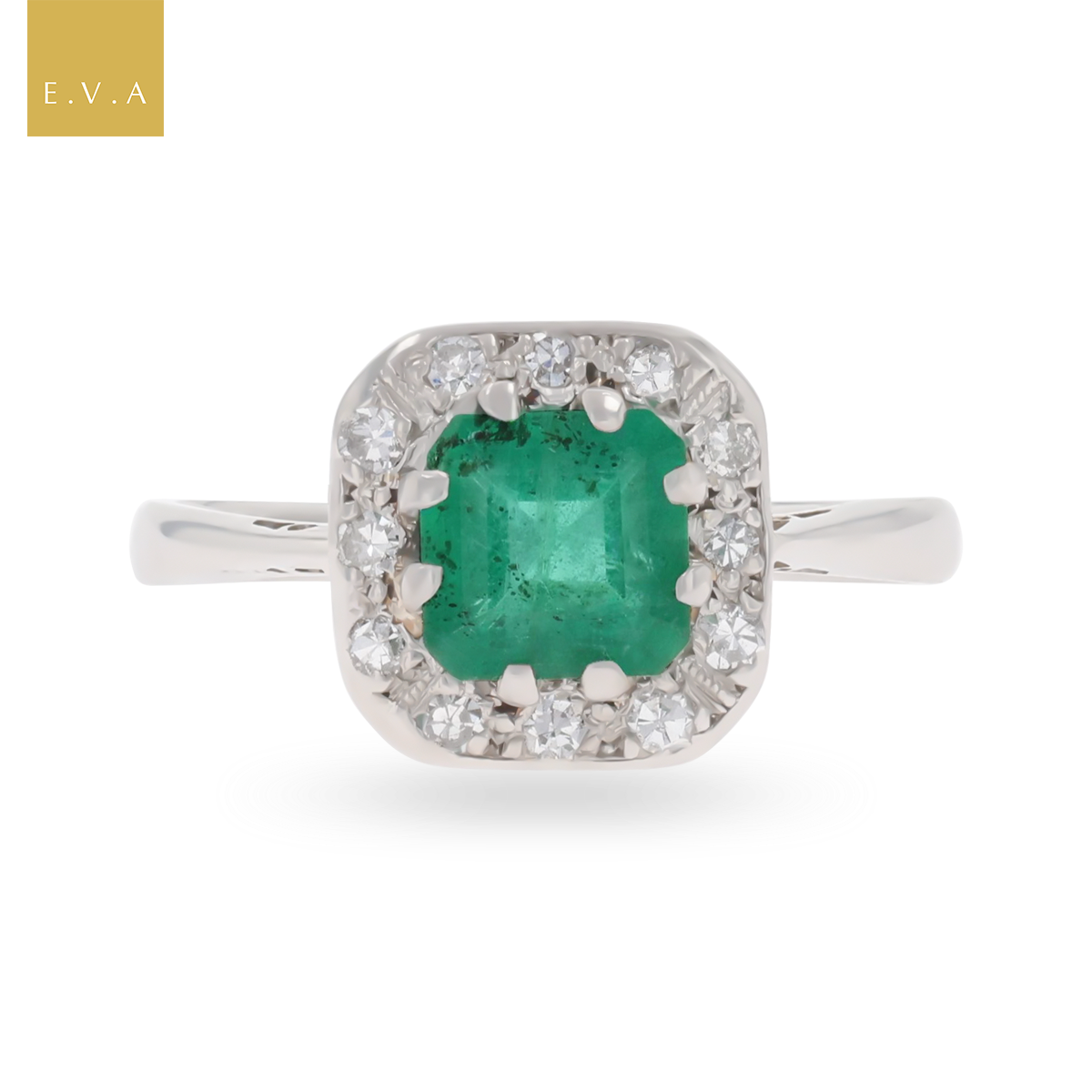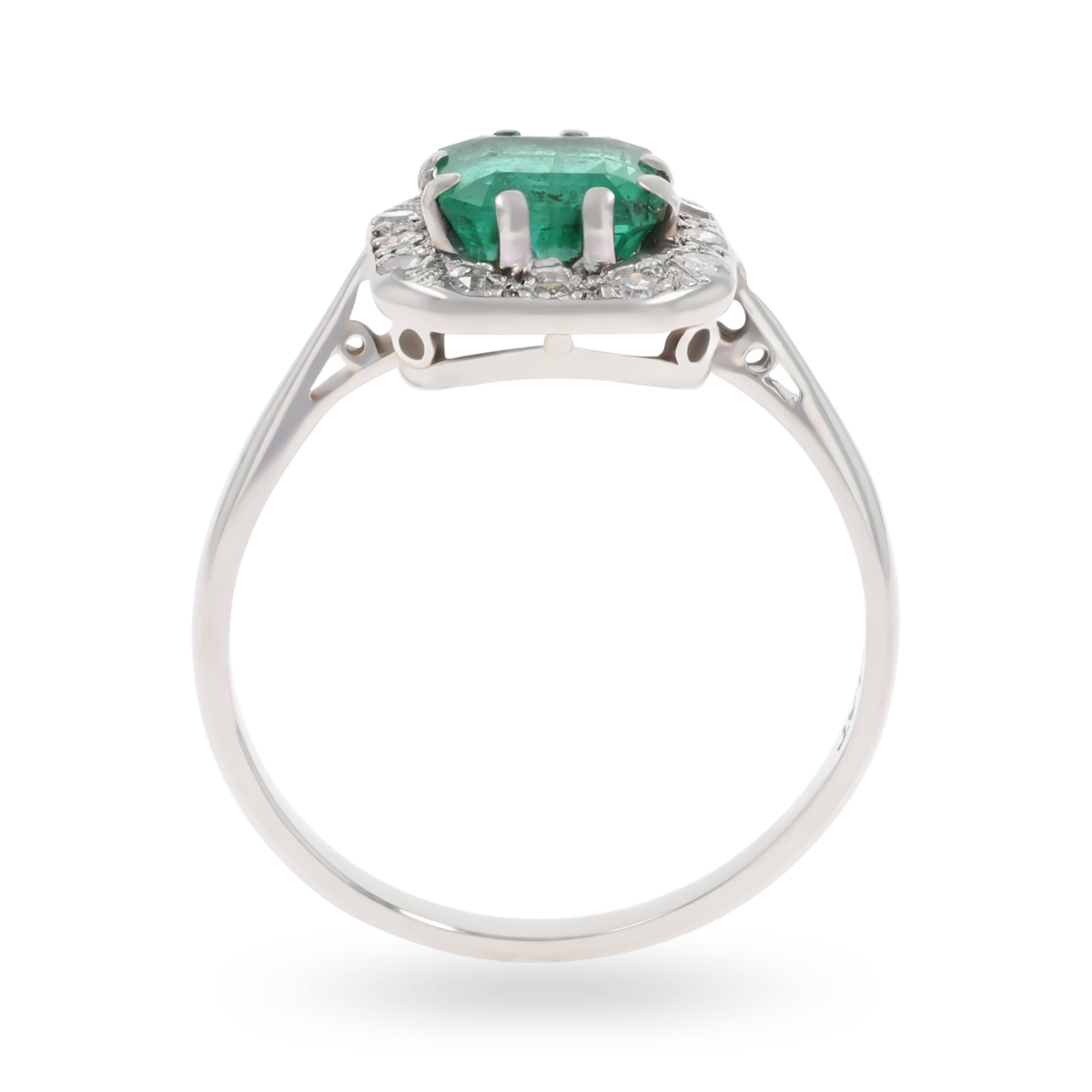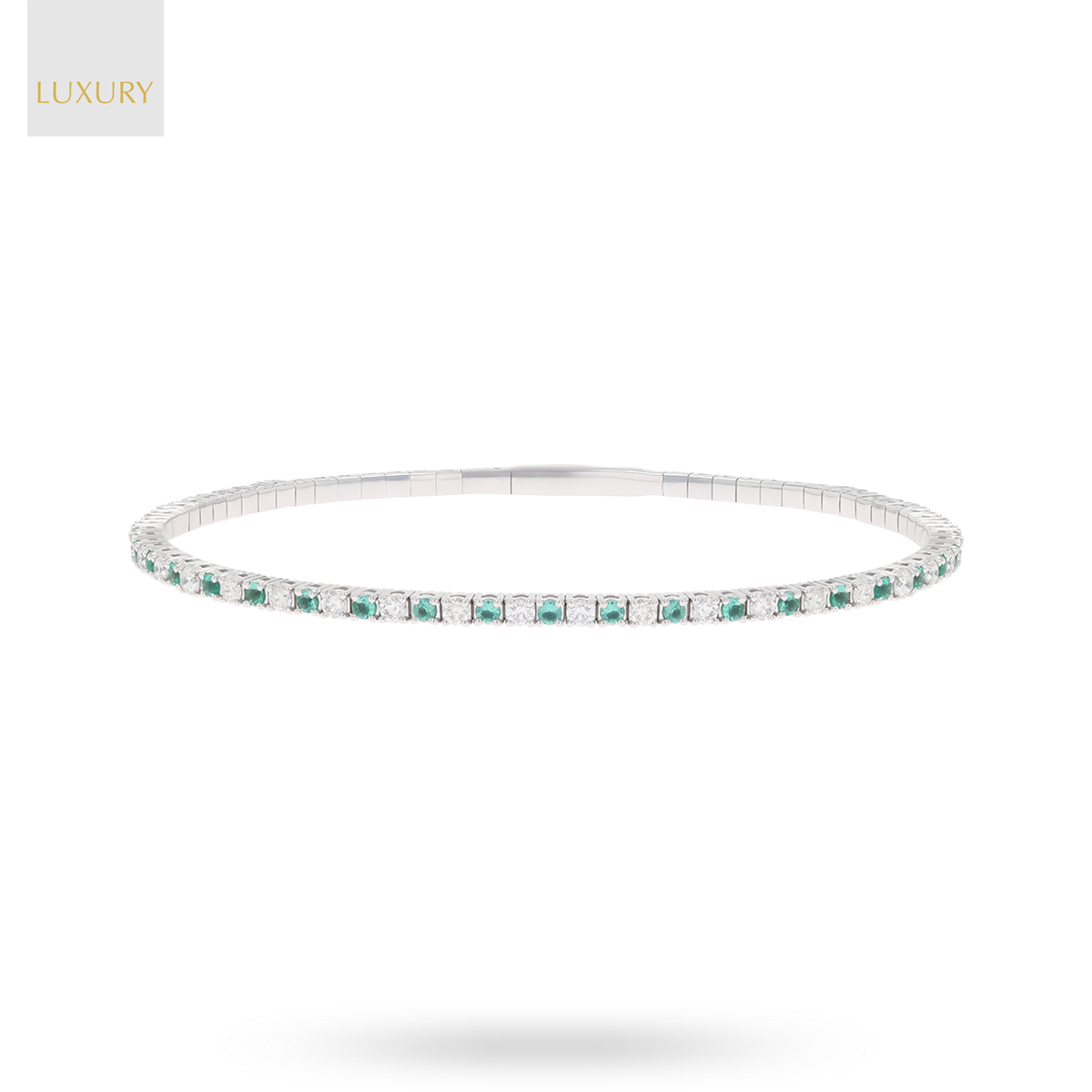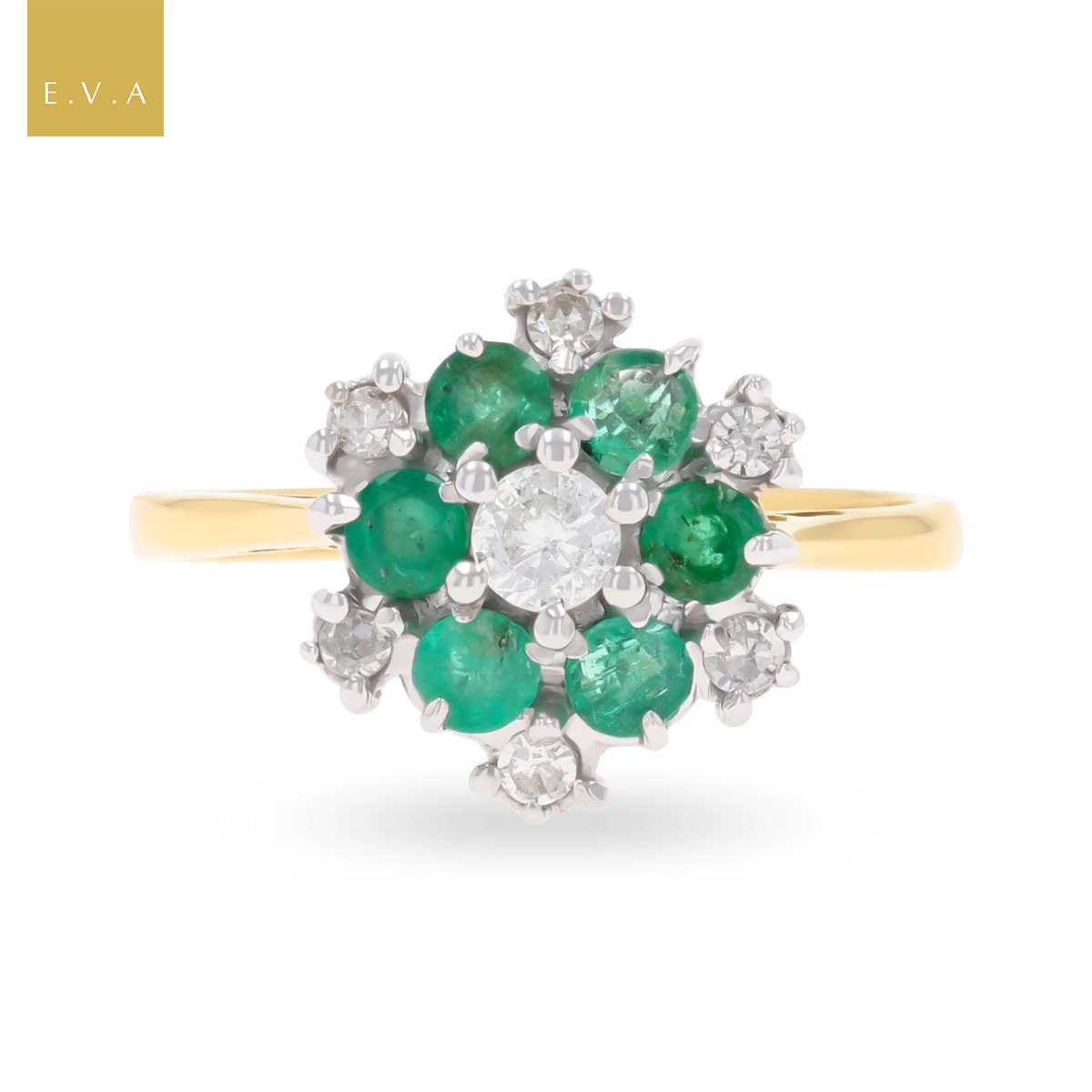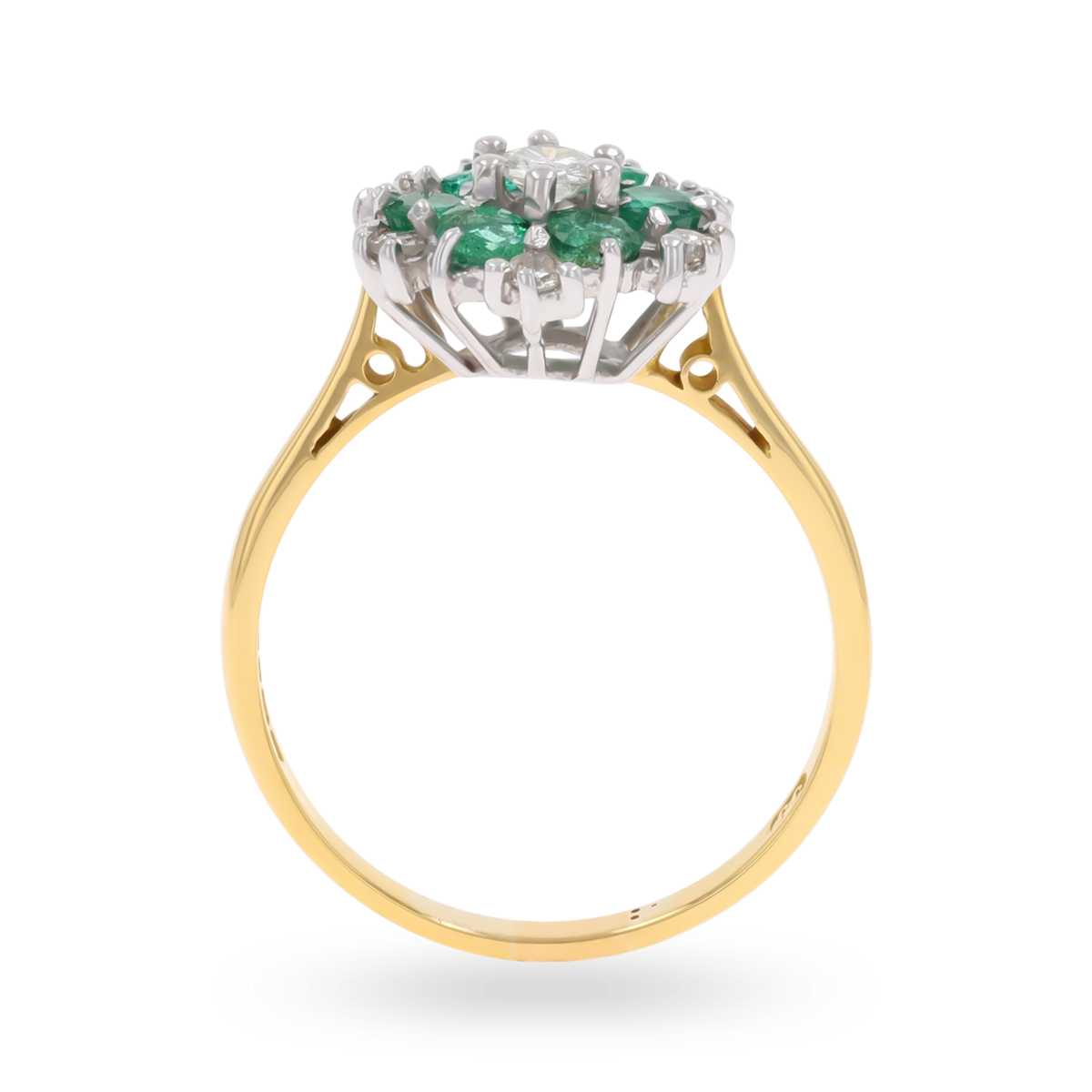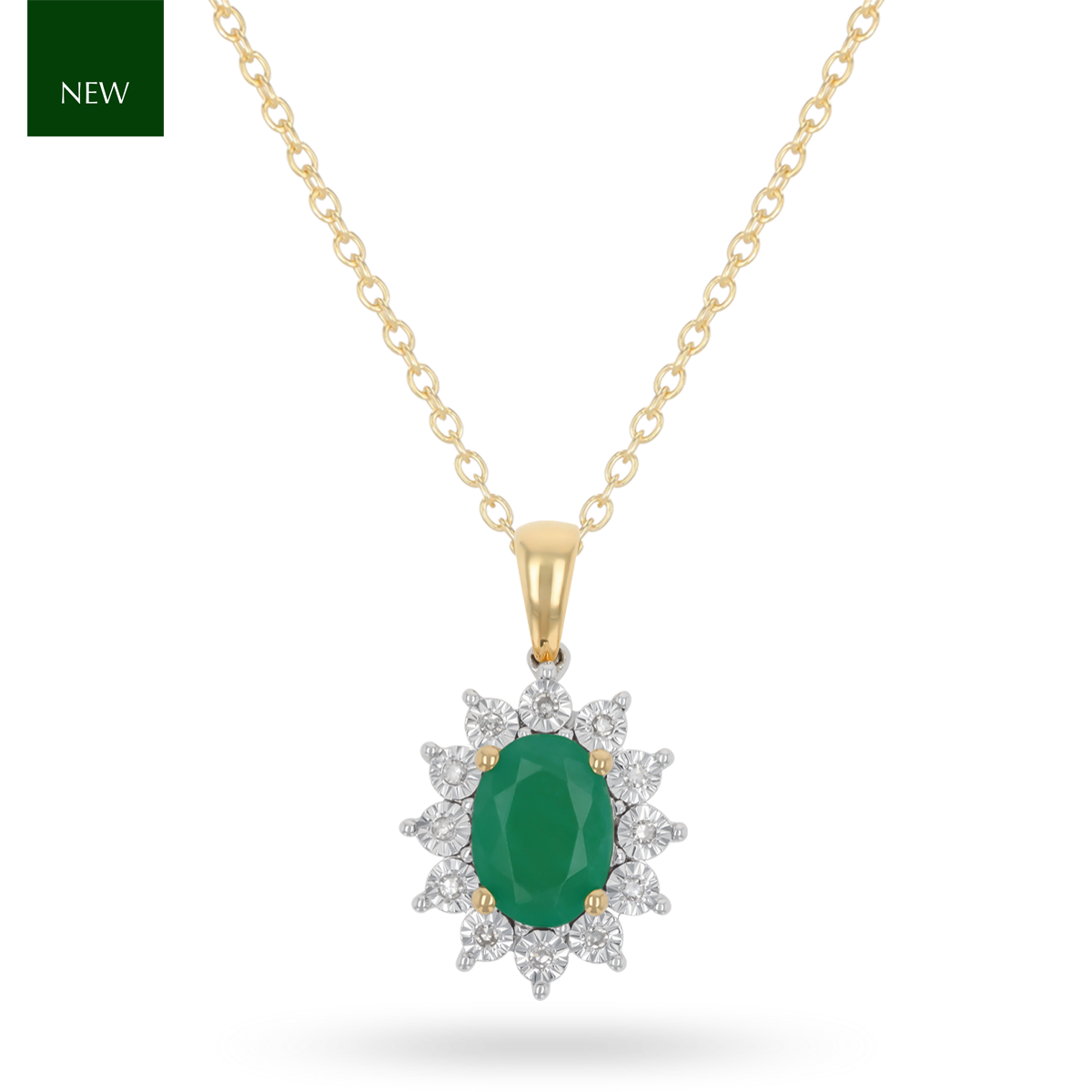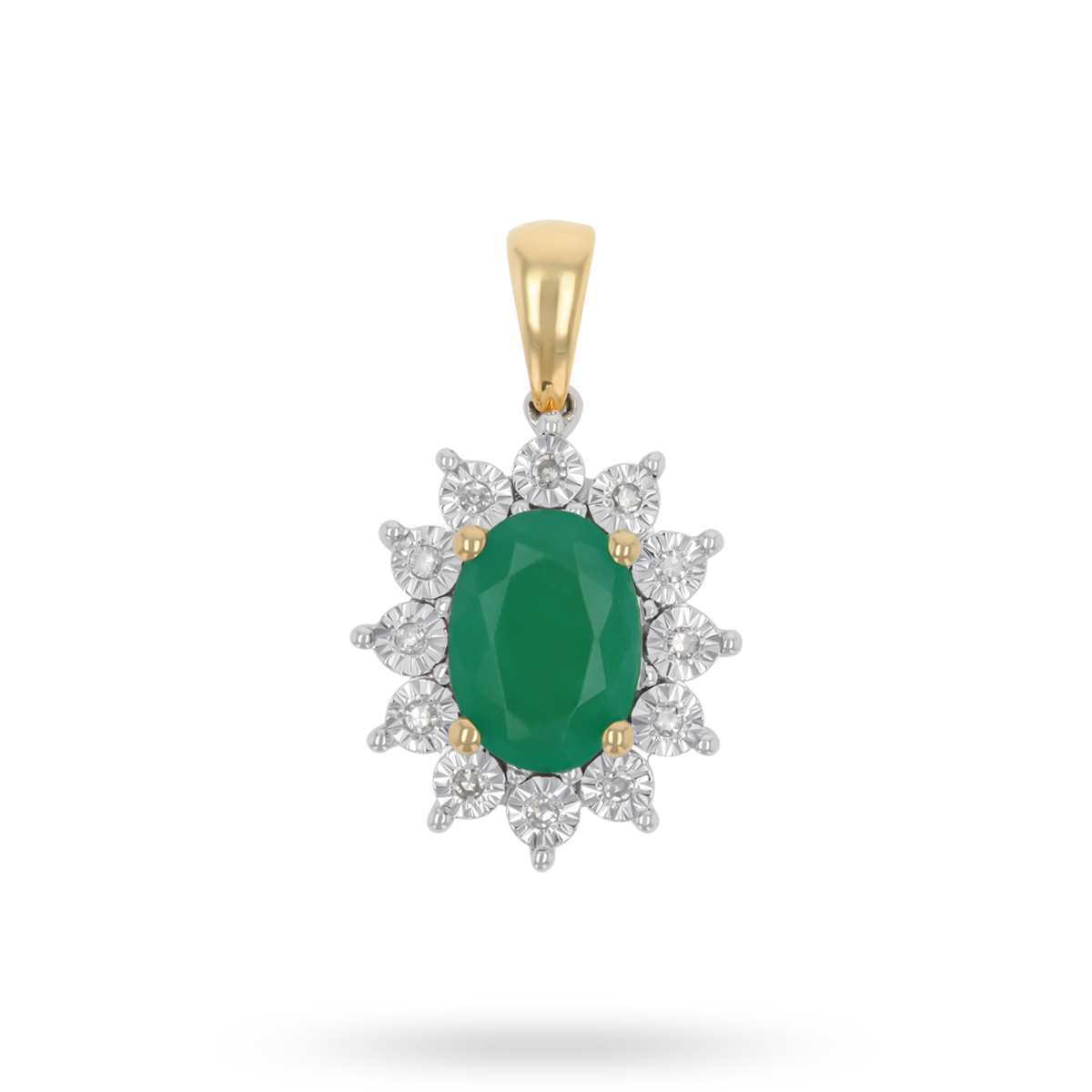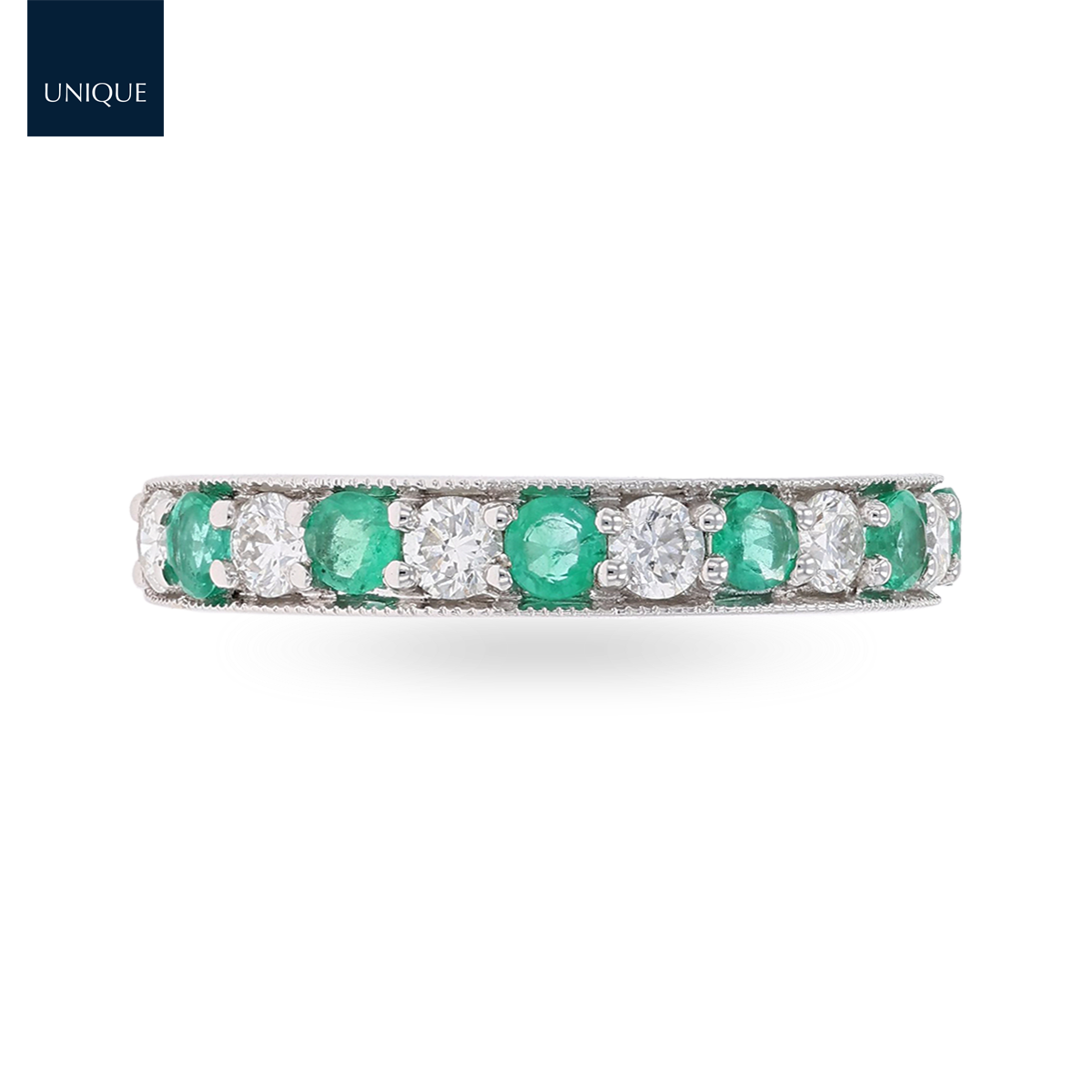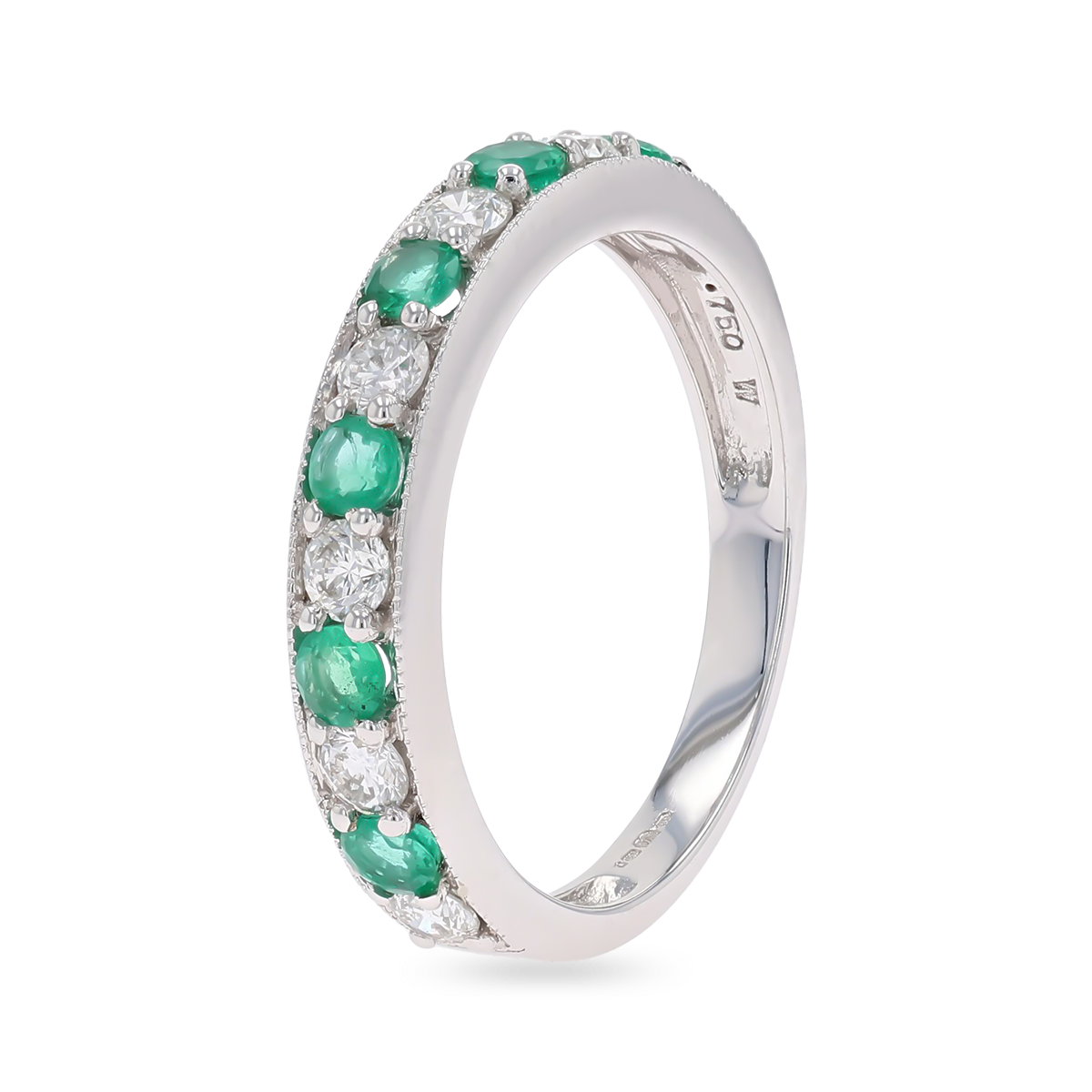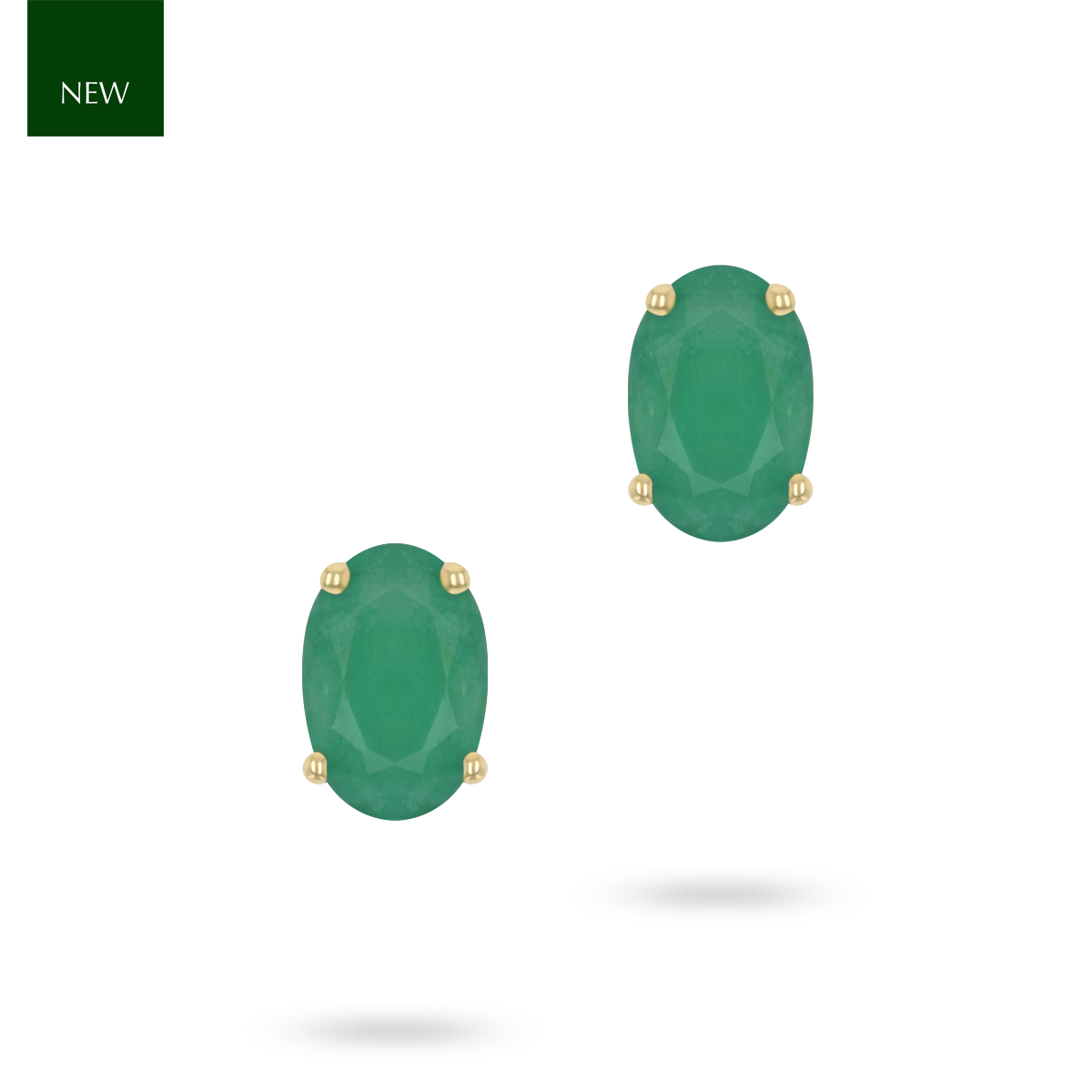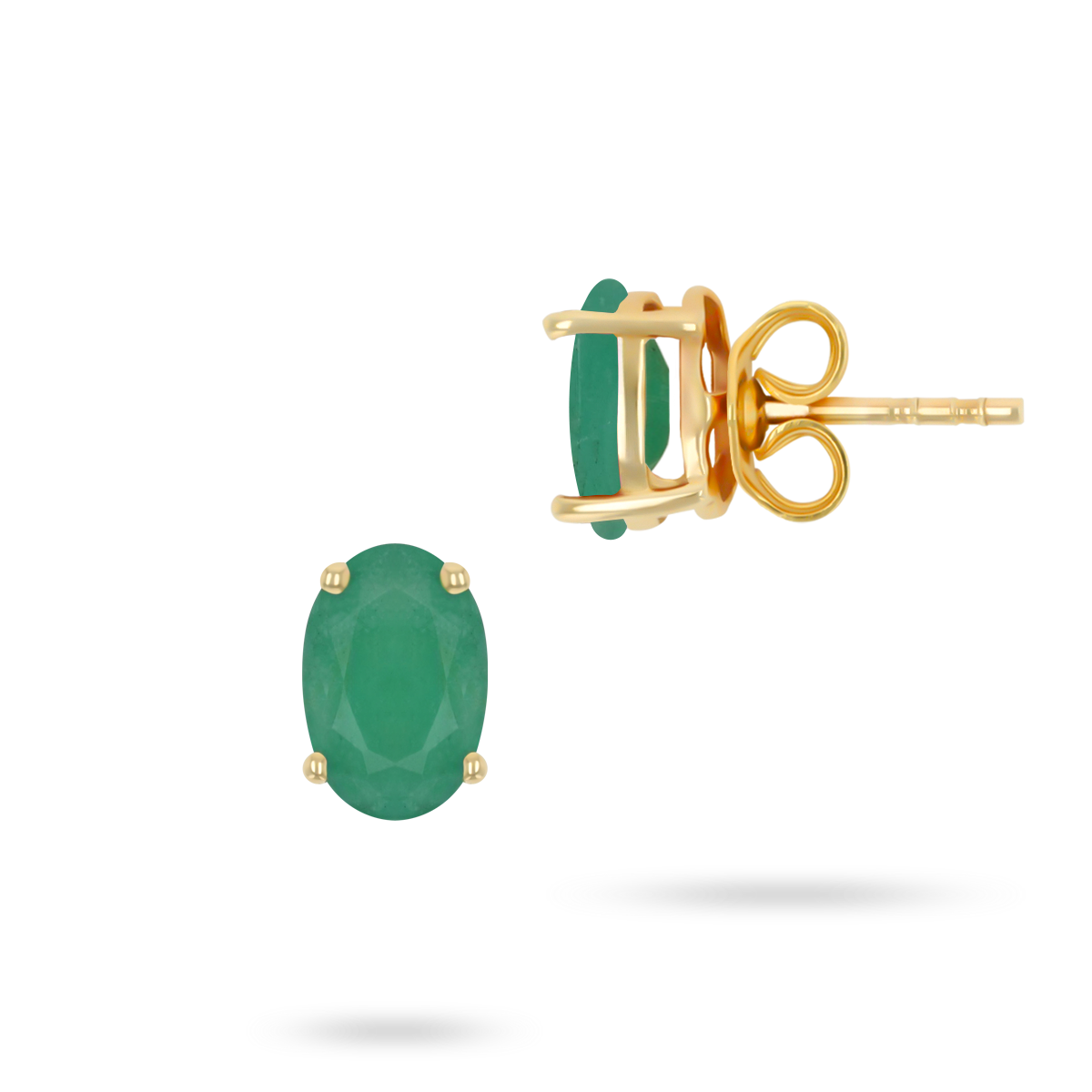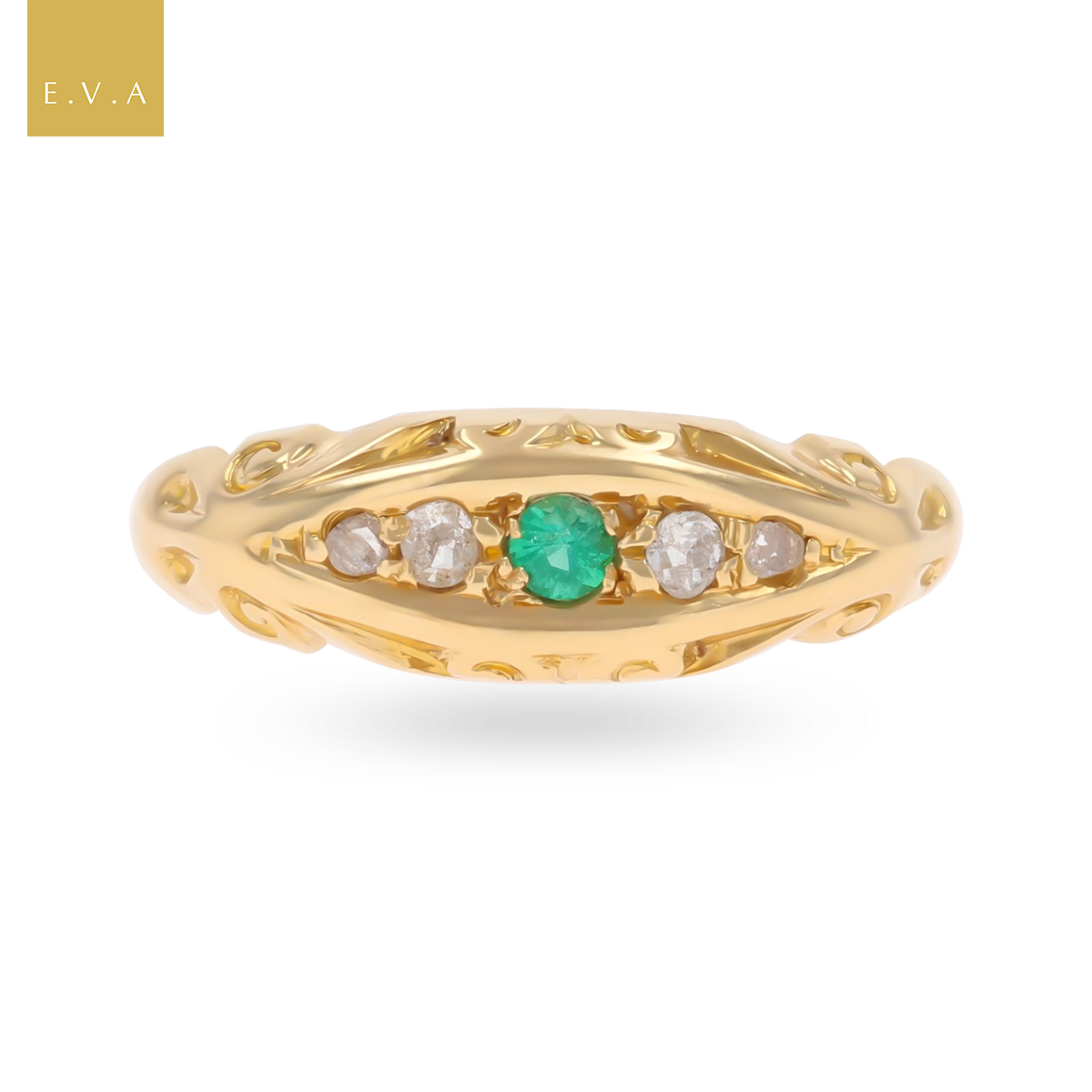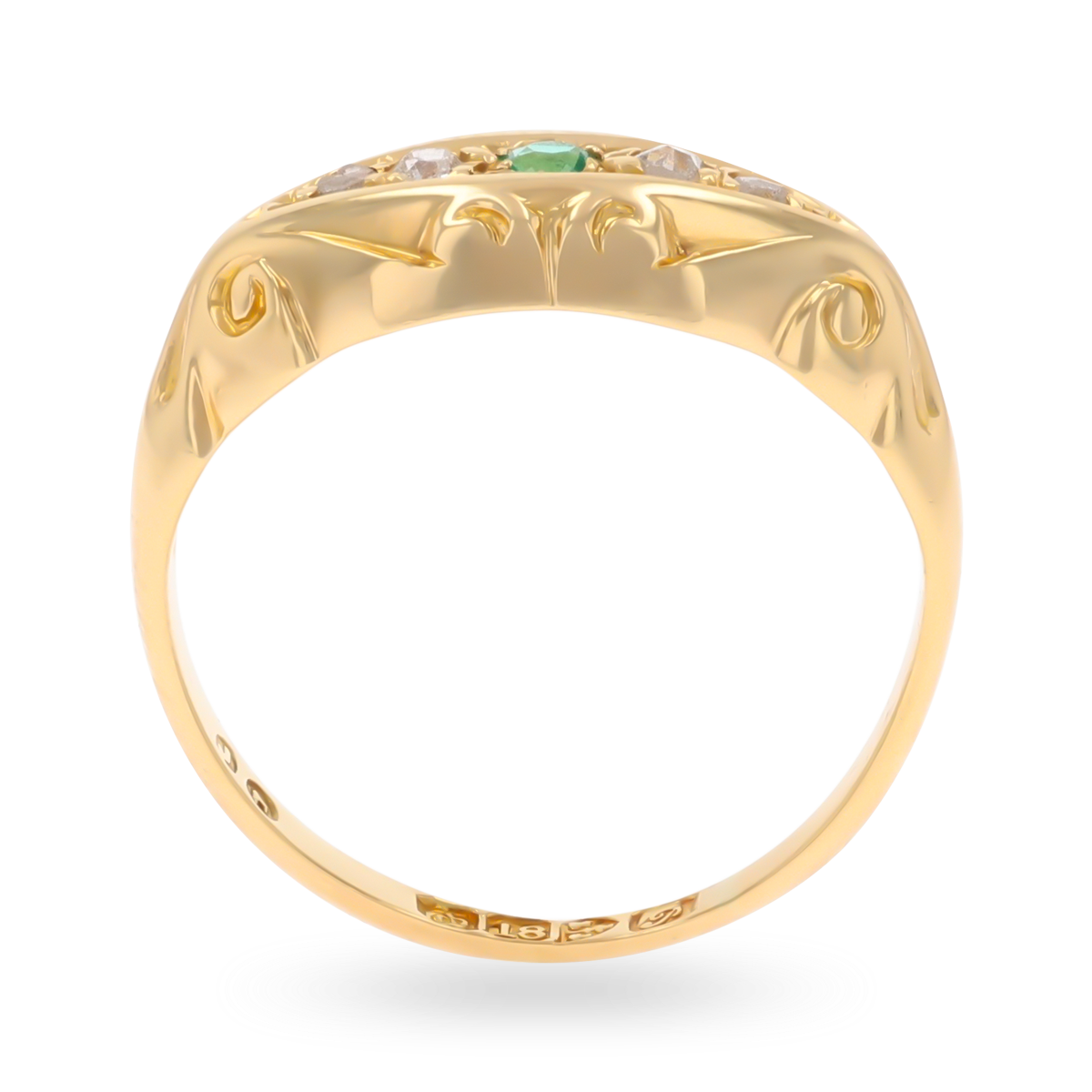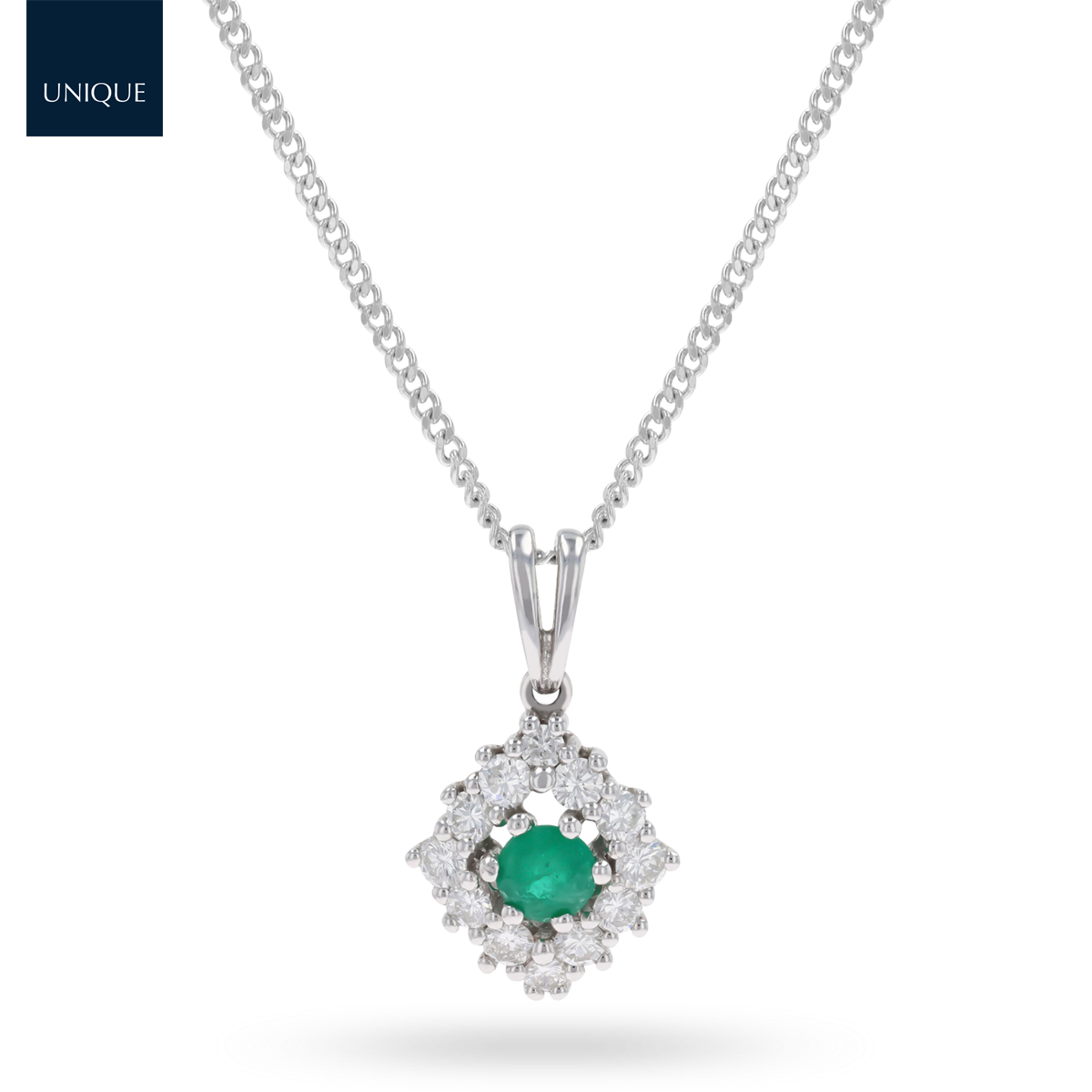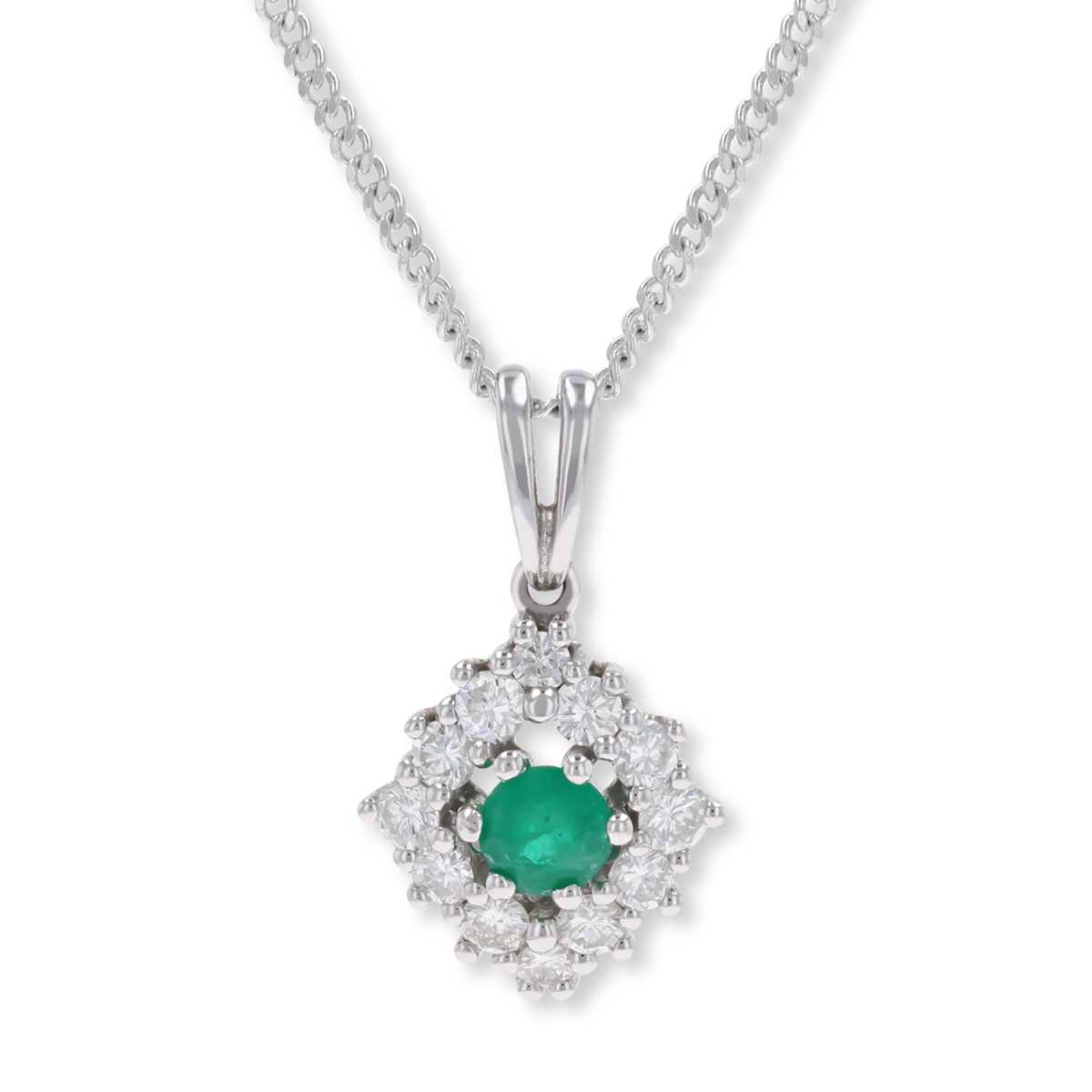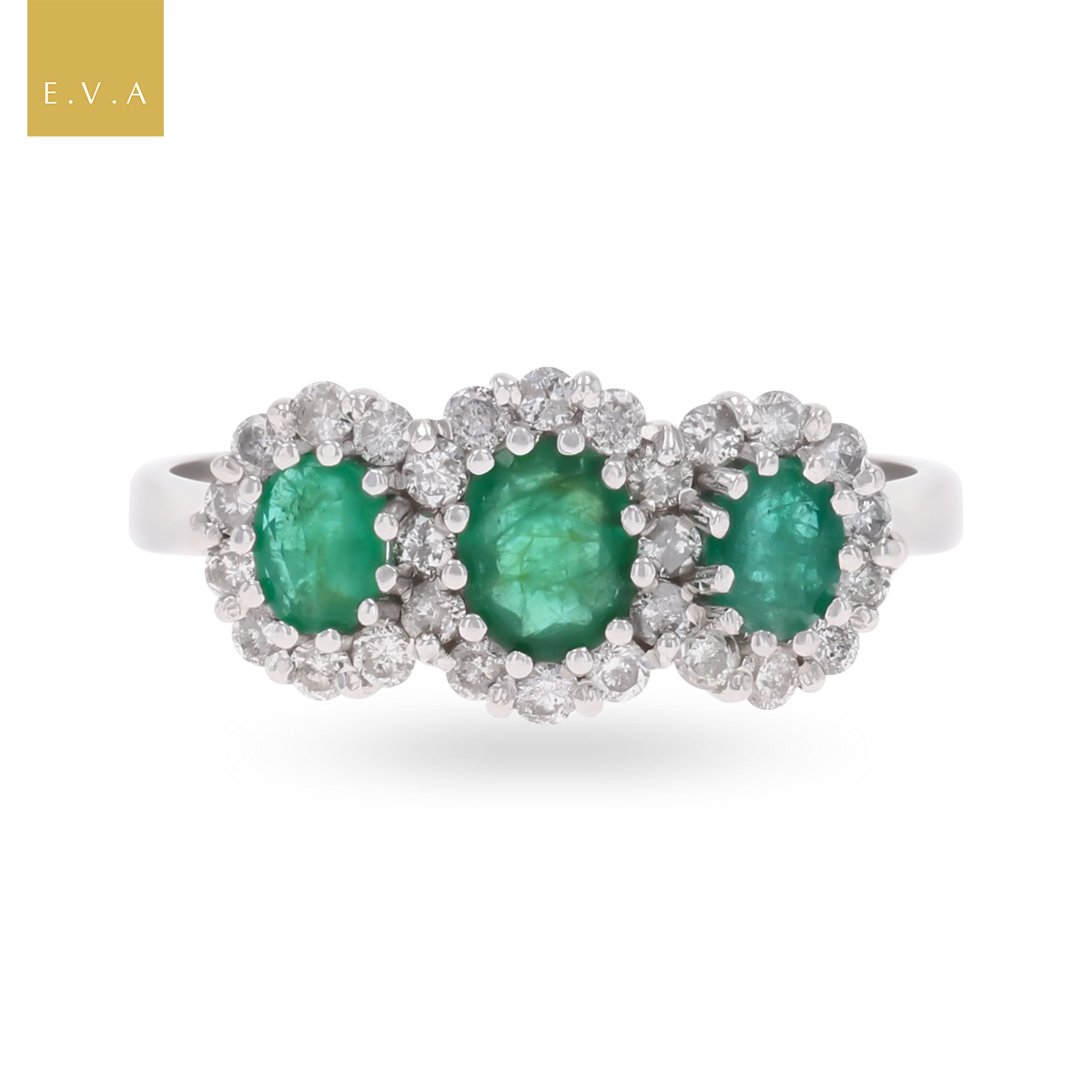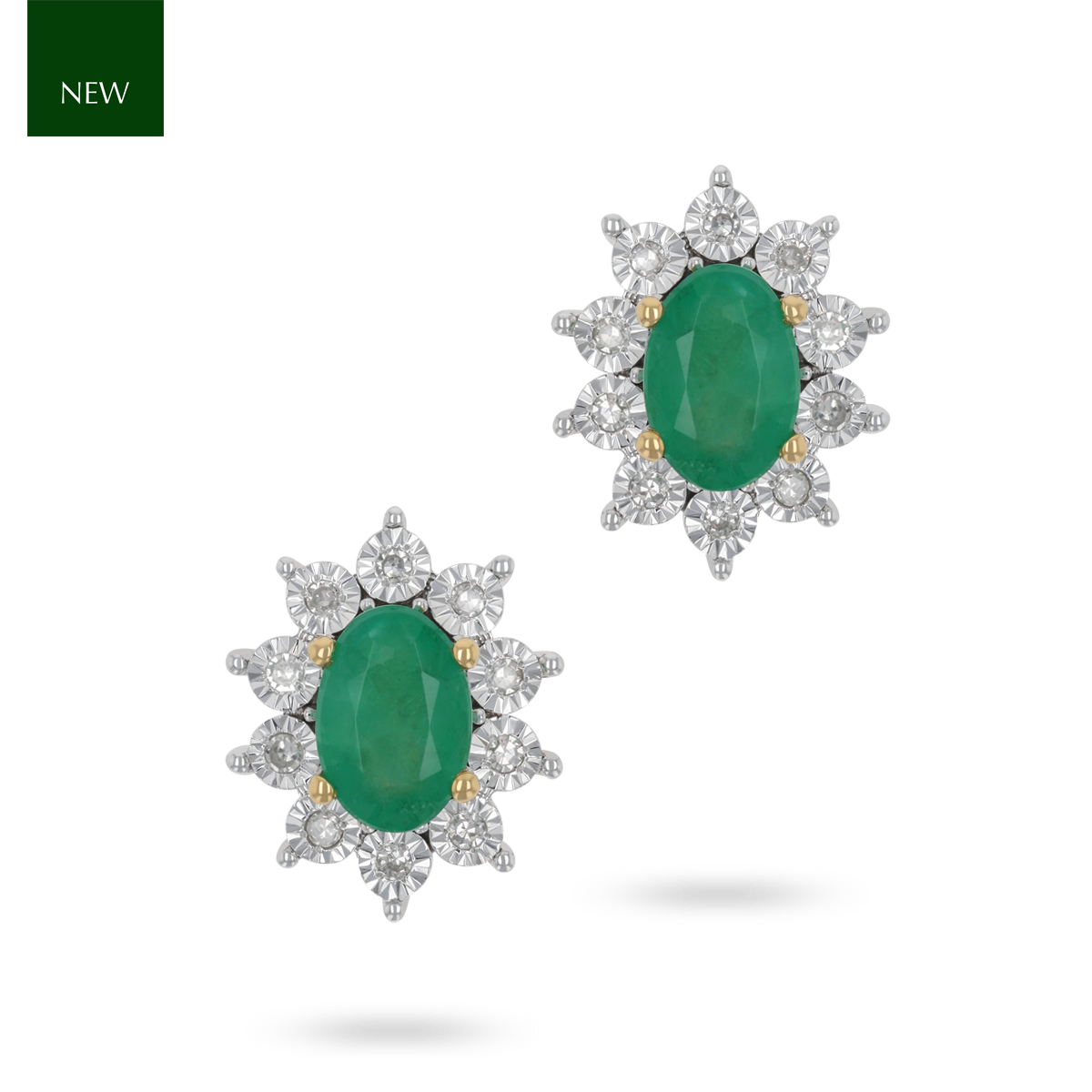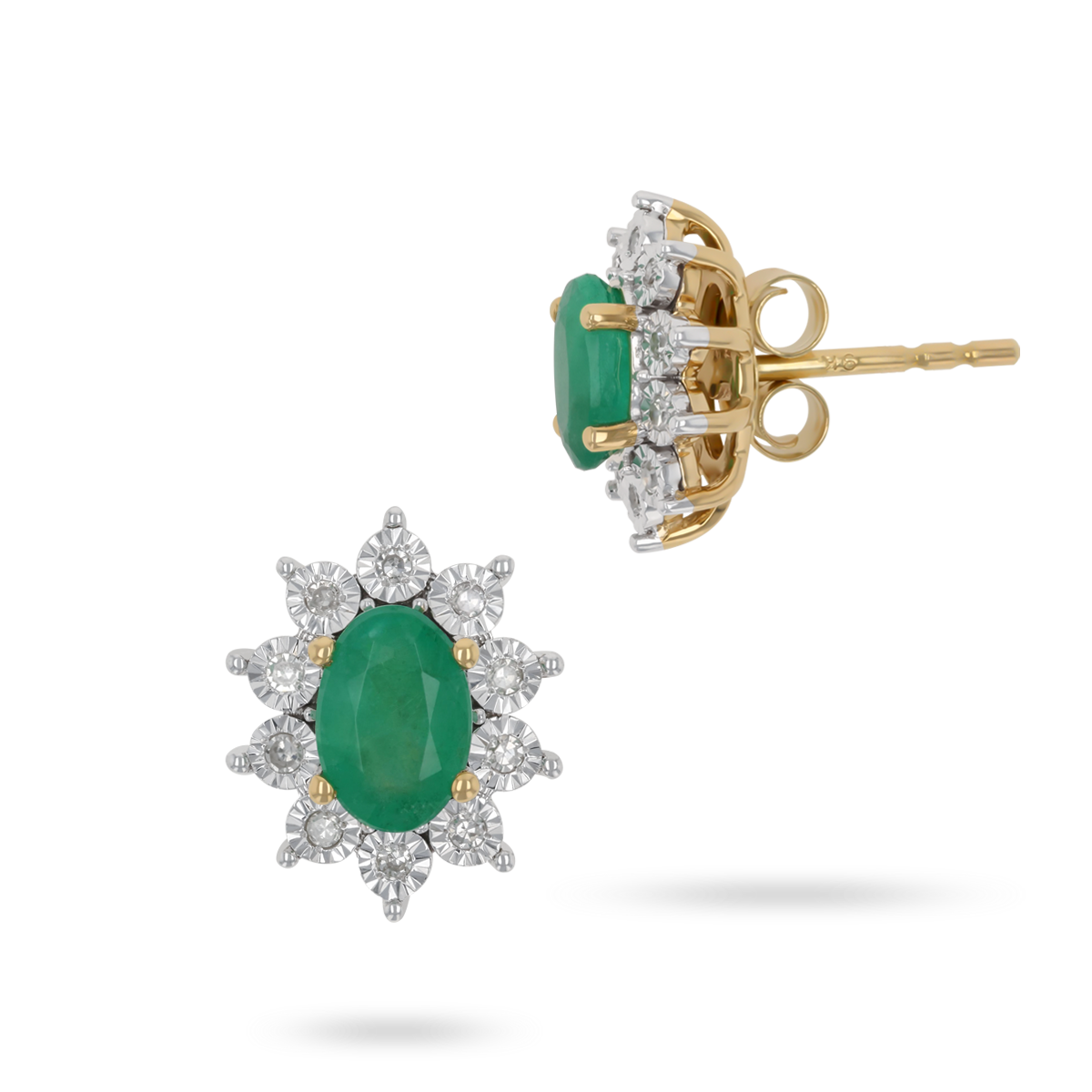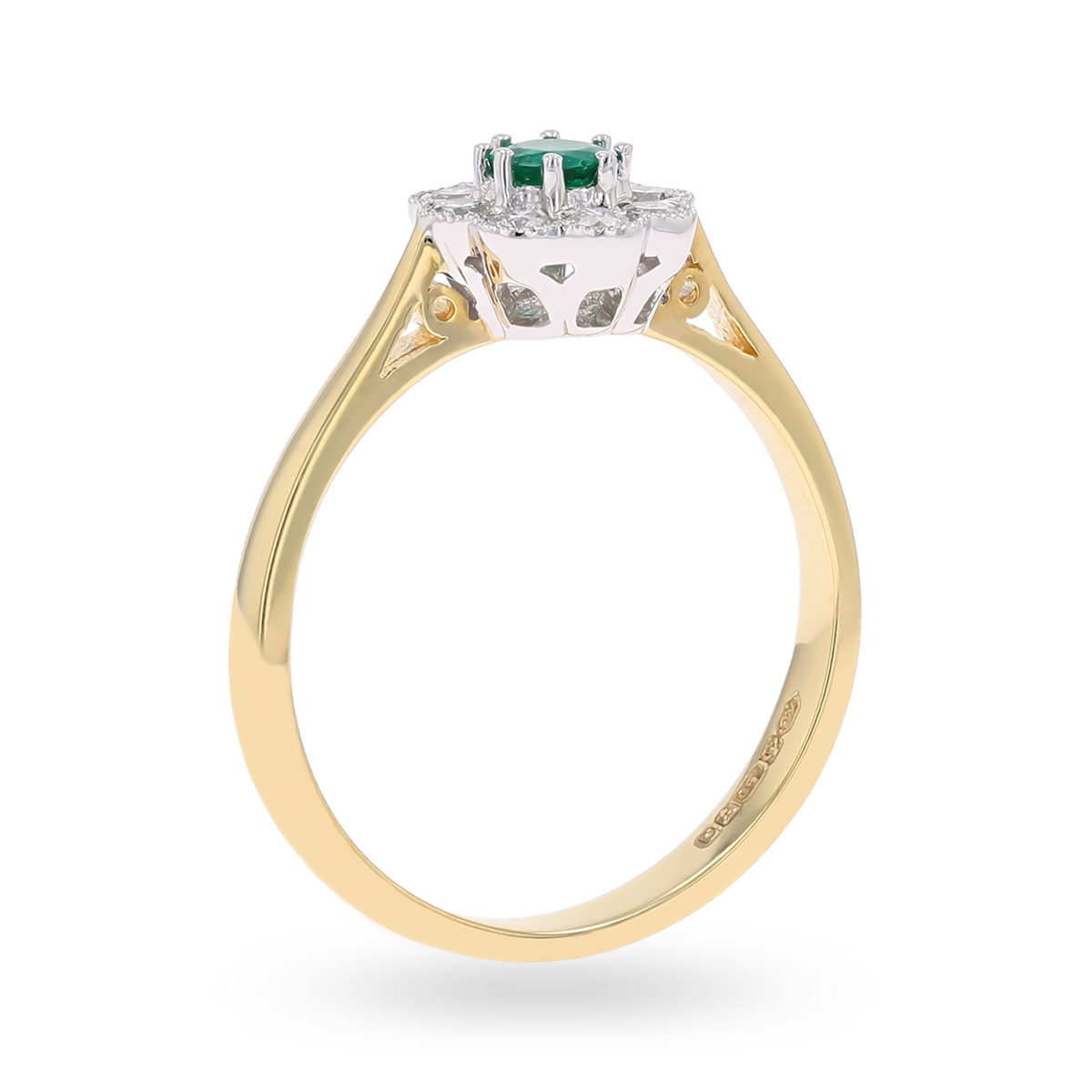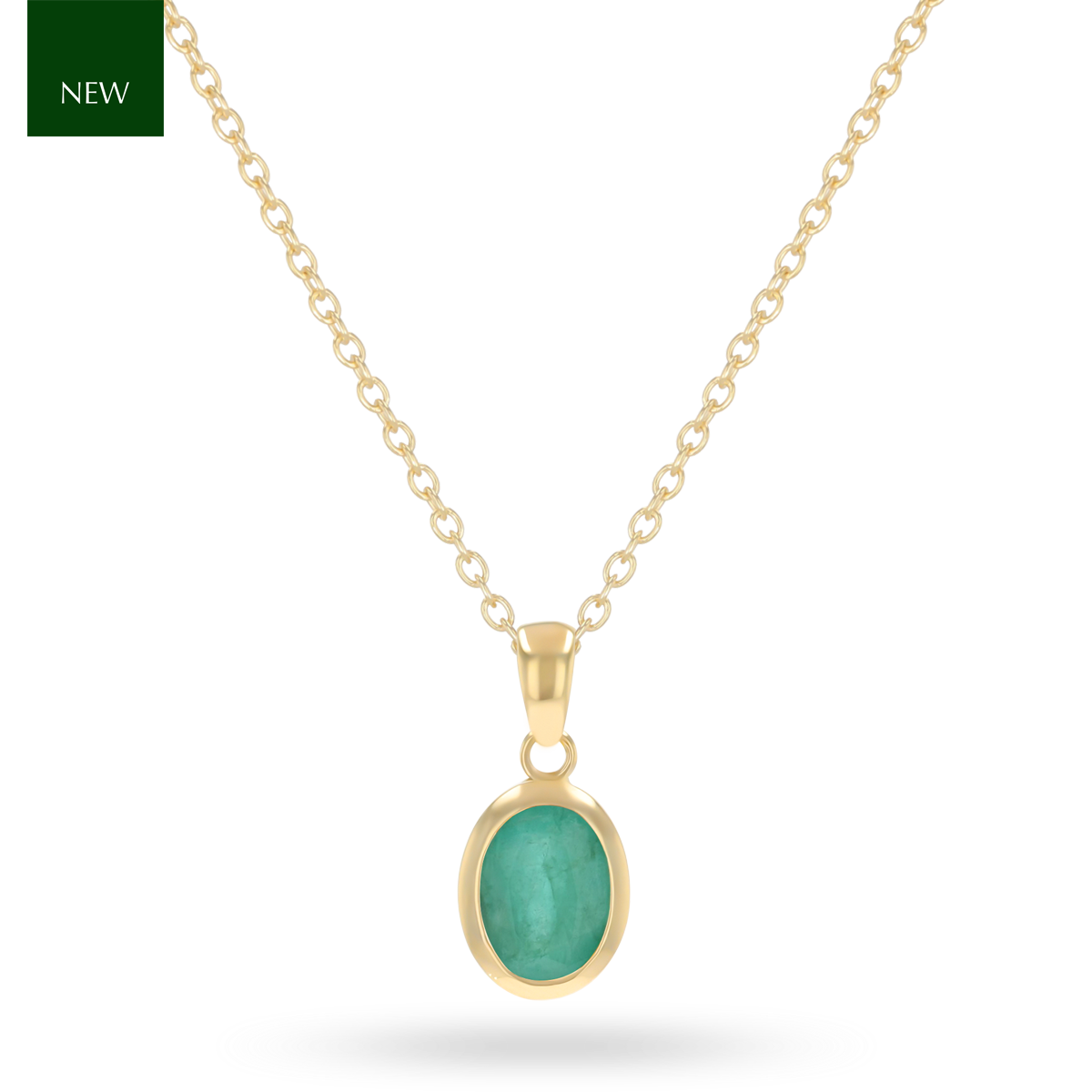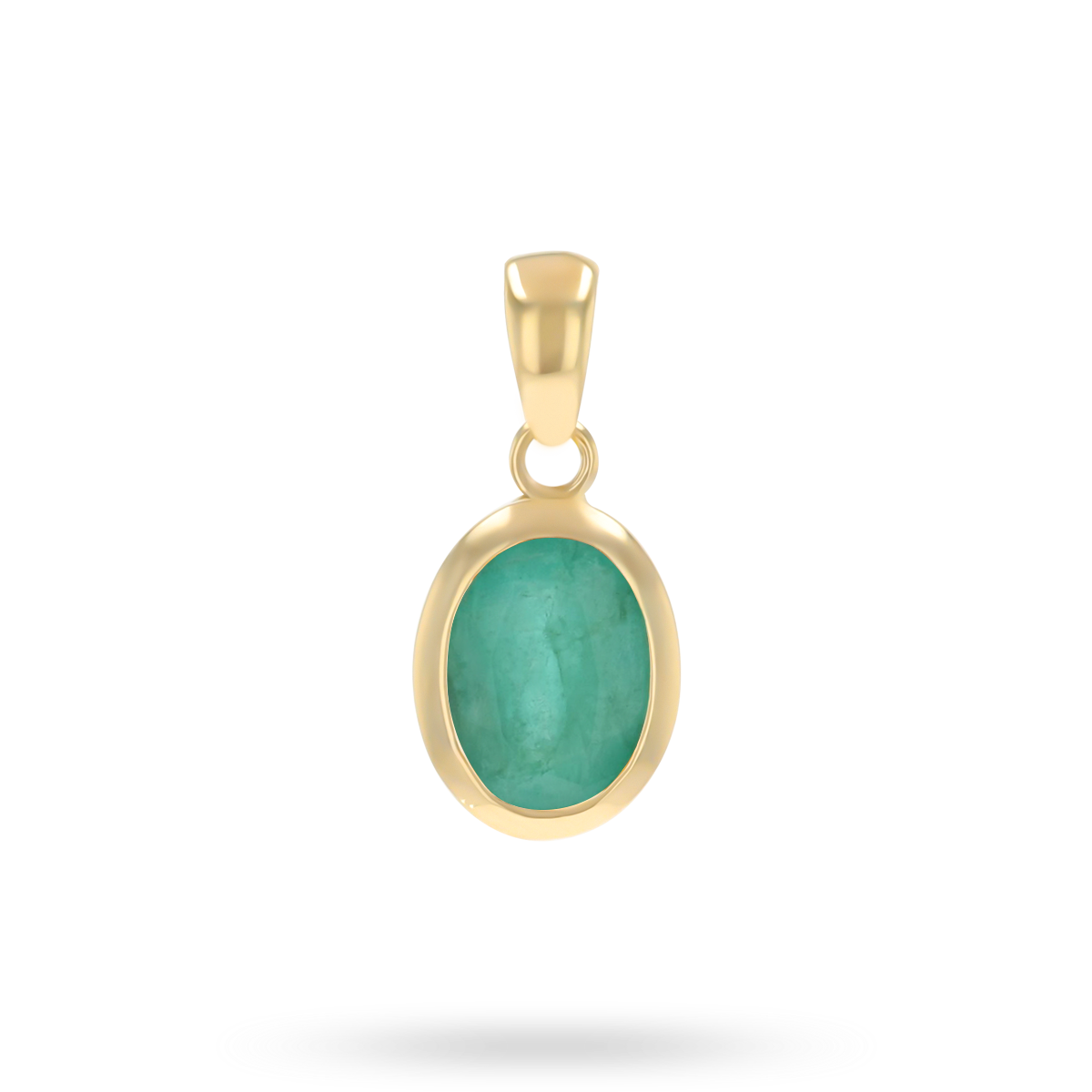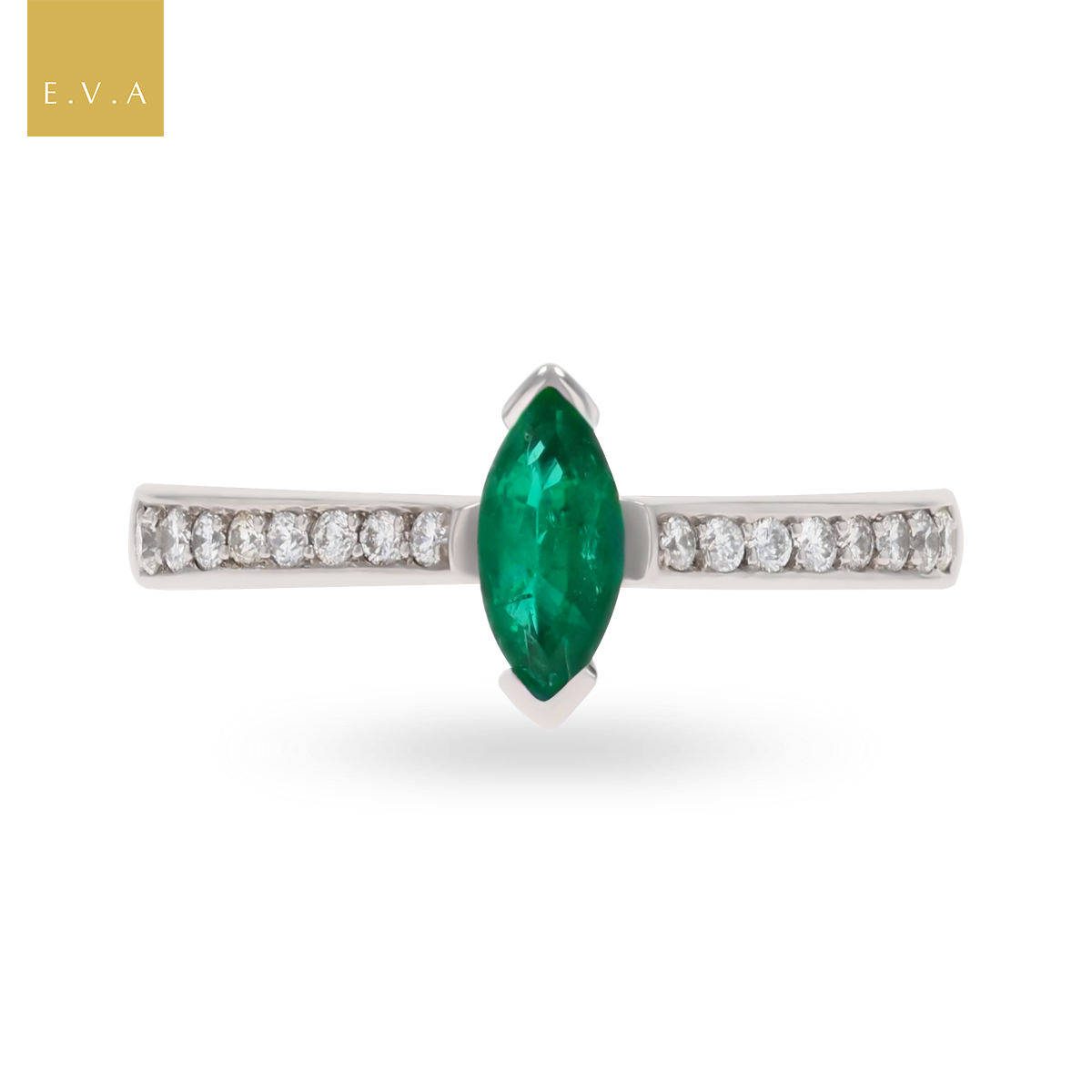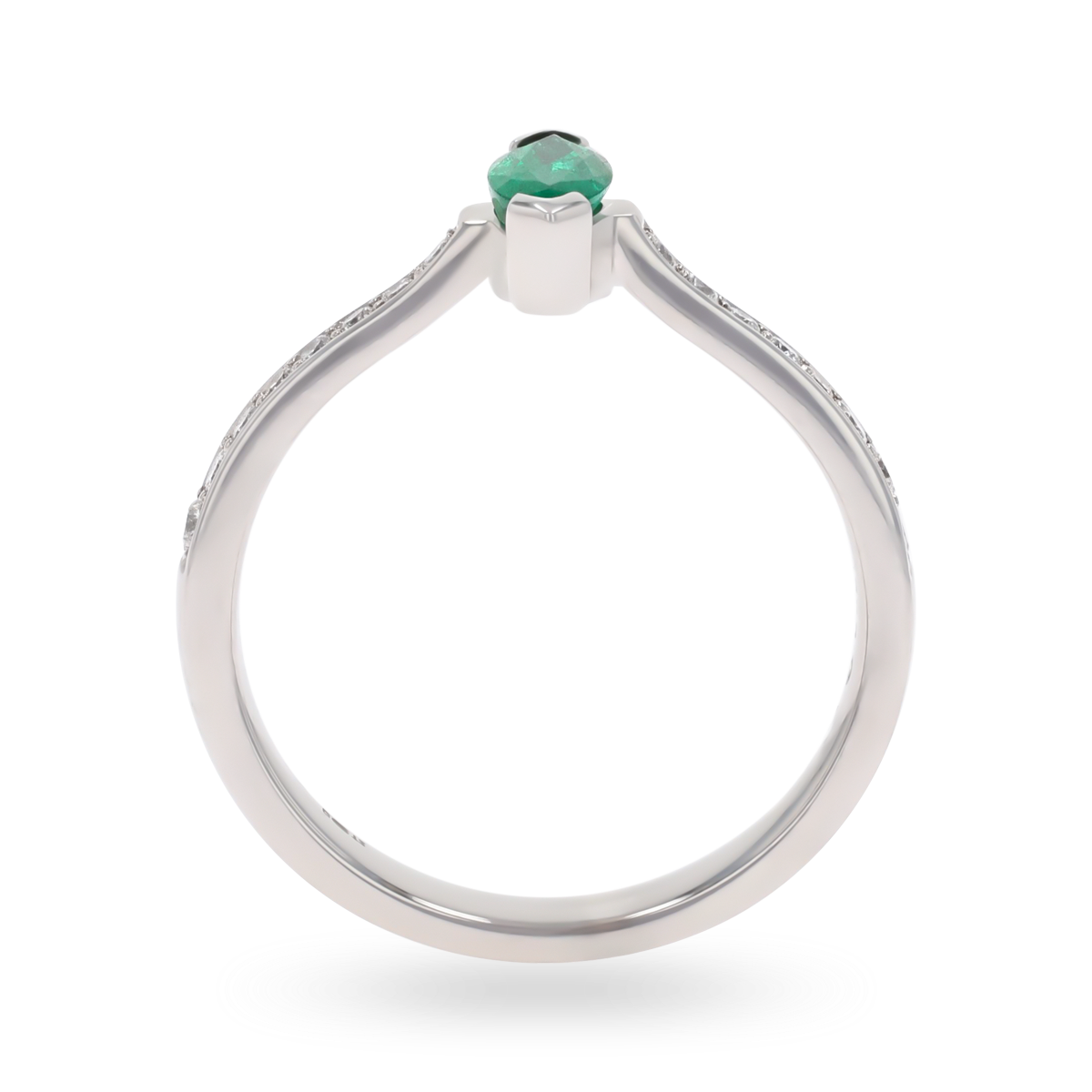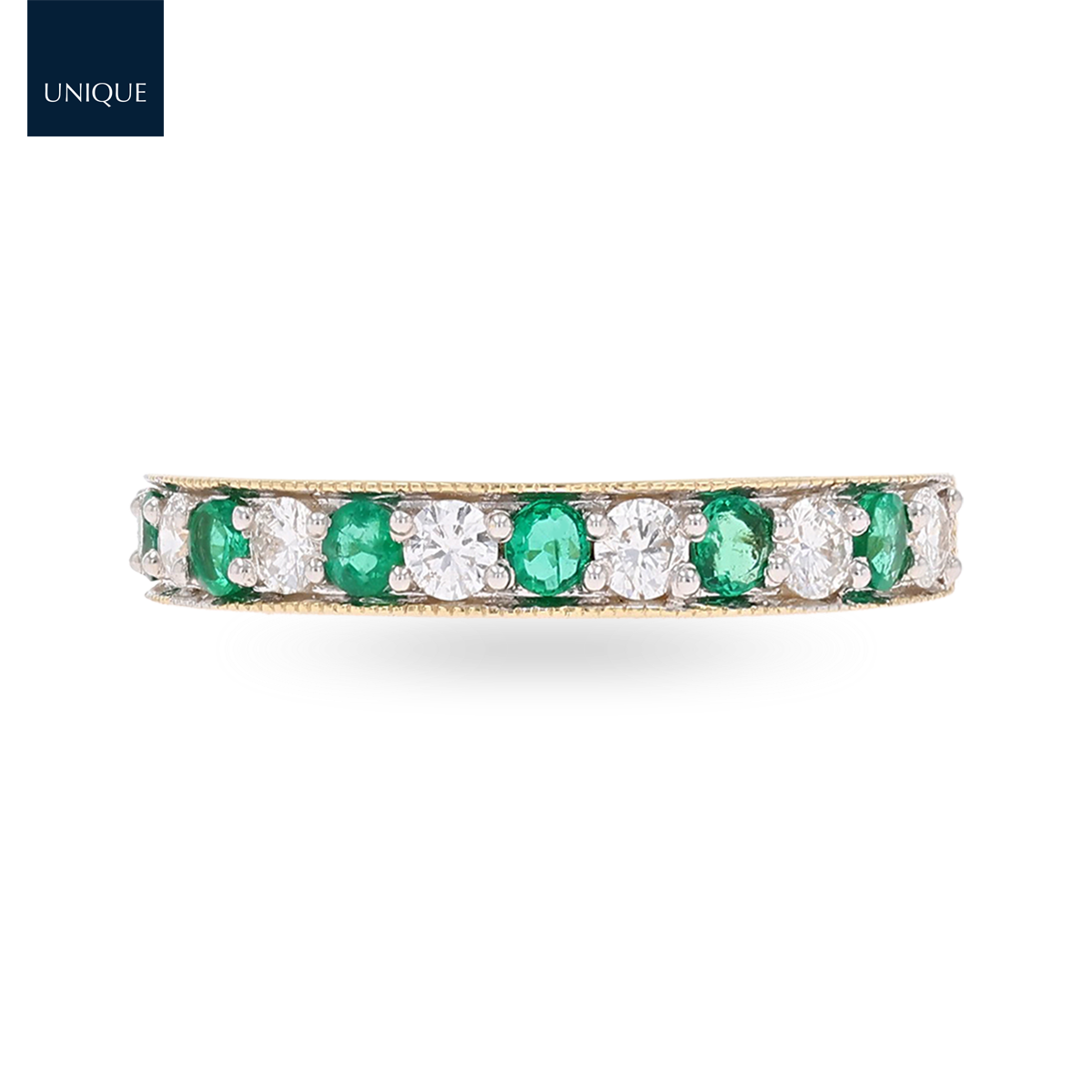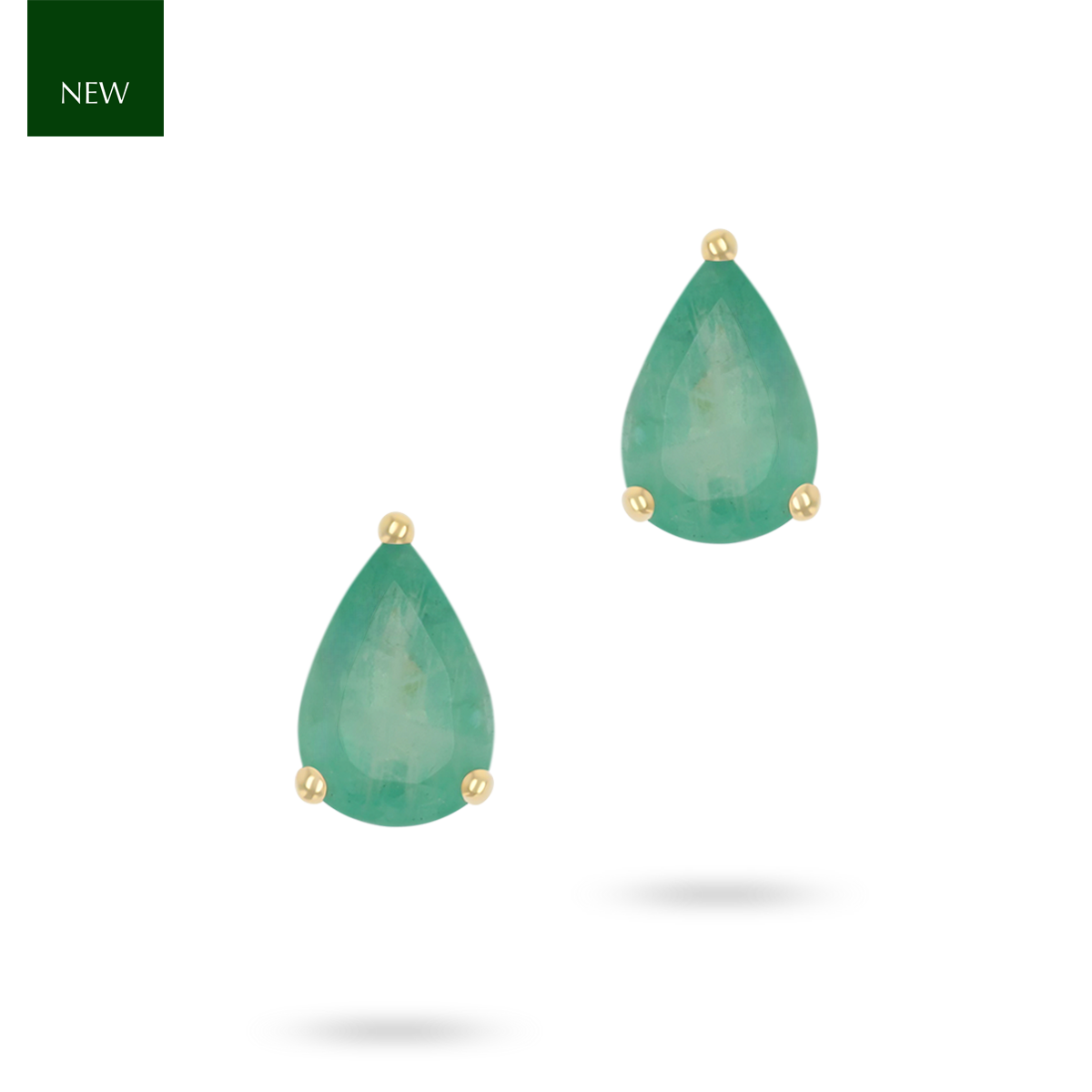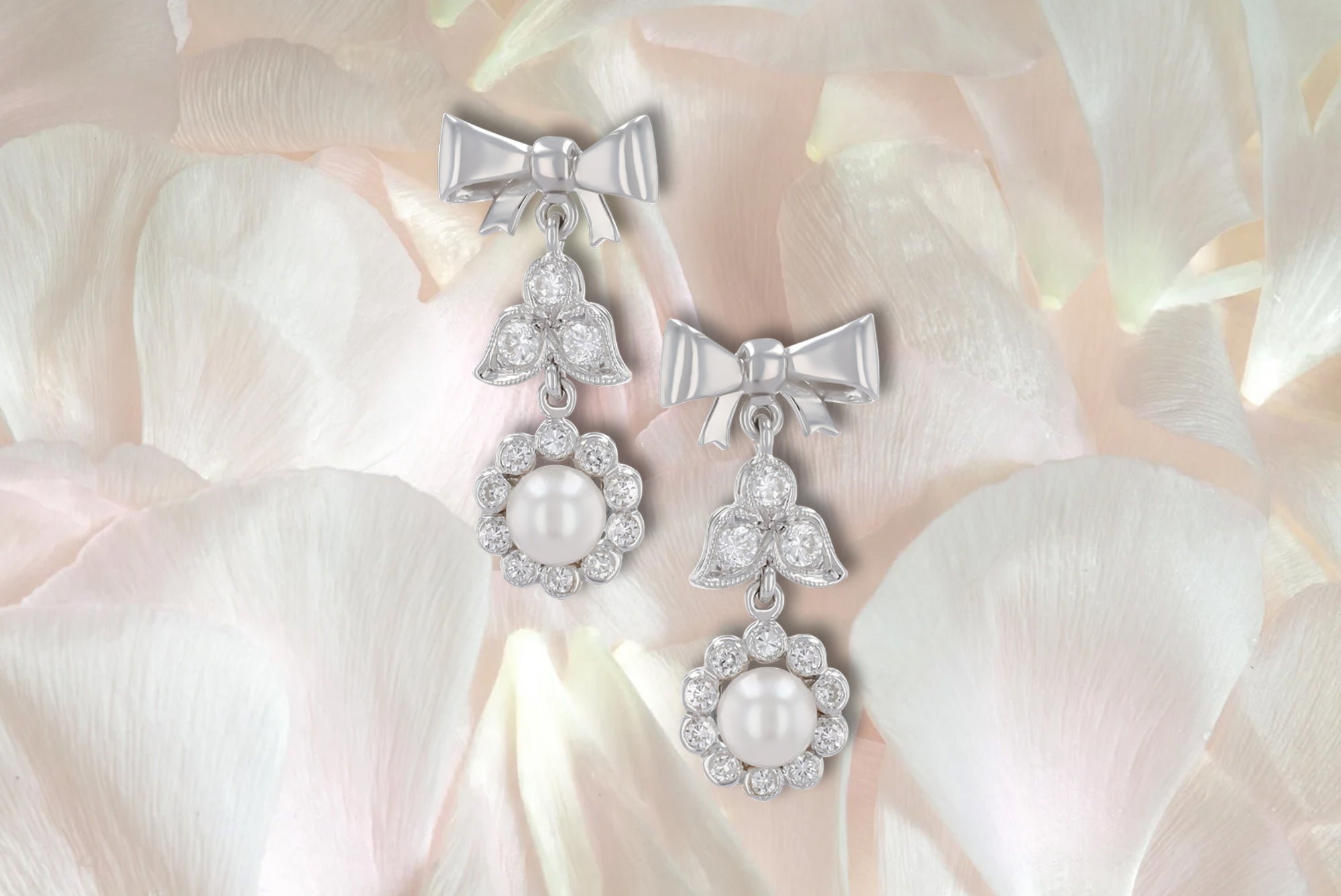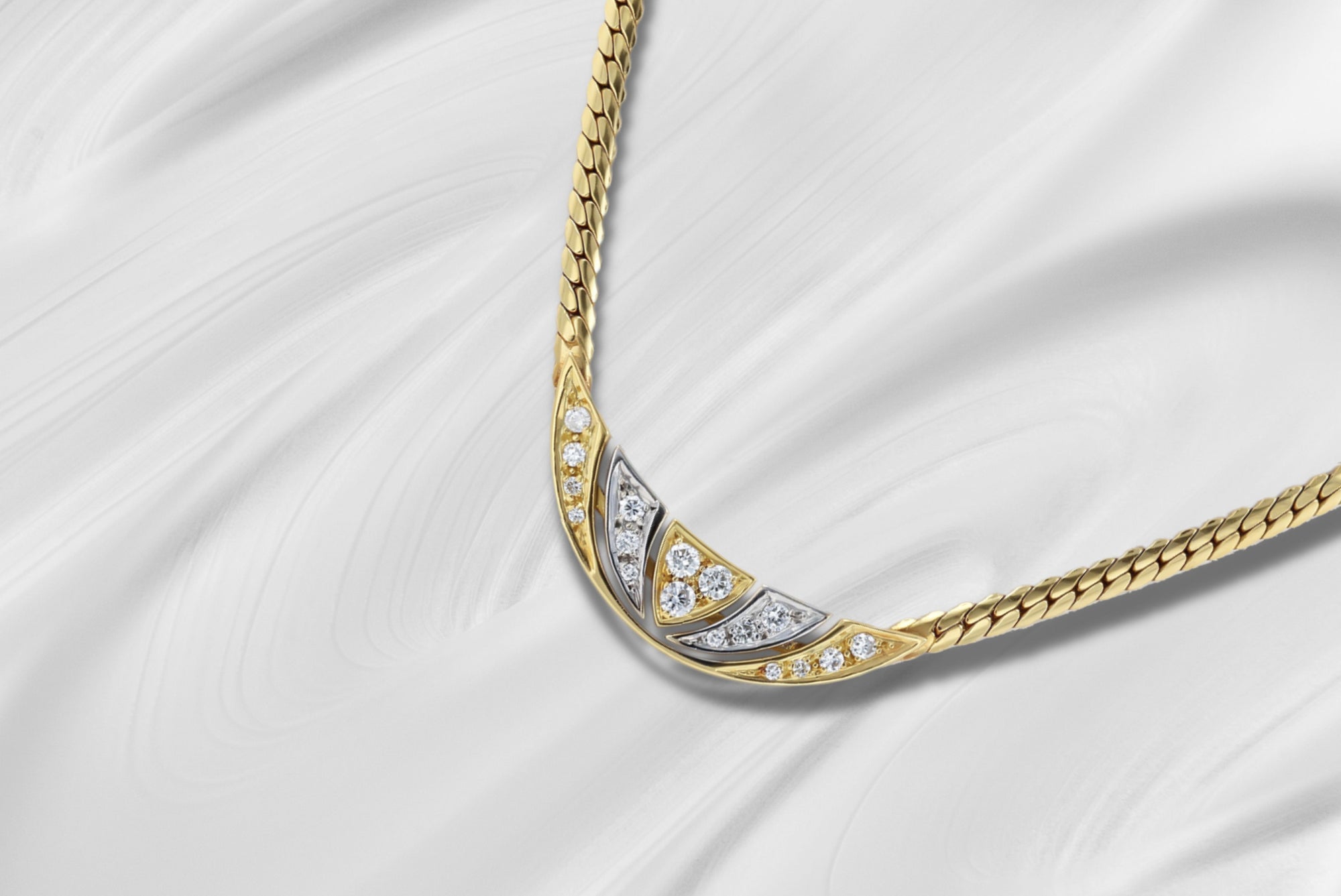The Colour of Spring
What is Emerald?
Emerald, is the green variety of the beryl family, which has a composition of beryllium aluminium silicate. Emerald comes in a variety of hues: from pale green, yellowish green, bluish green and vivid green and is coloured by Chromium (Cr) and sometimes Vanadium (V). Depending on the saturation and intensity of colour, the gemstone ranges from transparent to translucent, and reflects a vitreous lustre.

Crystal Habit
The gemstone crystallises with a prismatic crystal habit, which is classified under the hexagonal crystal system. It forms a hexagonal shaped prism and therefore exhibits a hexagonal cross-section. The crystal is terminated with a hexagonal bipyramid and pinacoid faces. The surface of the crystal, often has indistinct markings. Alternatively, emeralds can be found as broken fragments or water worn pebbles in alluvial deposits.

Localities of Emerald
Emeralds can be sourced and mined from multiple localities such as: Brazil, Colombia, India, Pakistan, Siberia, South Africa, Zambia and Zimbabwe. Perhaps, the most famous location for emeralds, is the Muzo district in Colombia. The mine is renowned, for unearthing the most expensive emeralds to date, resulting in large size emeralds with a rare, high clarity and a rich, saturated green colour.

Under The Loupe: Inclusions
Emeralds frequently exhibit a vast scope of magical inclusions and some are even characteristic of certain localities. Here are just some of the inclusions detected in emeralds, from: three phase (solid, liquid and gas), two phase (liquid cavity with a gas bubble), tremolite (fibrous needle-like crystals), actinolite (bamboo shaped crystals), colour zoning, mica flakes, pyrite, calcite, feldspar, dolomite, limonite and chromite crystals.

Treatments
Fracture filling is a non-permanent treatment, applied to emeralds to improve its colour and clarity. Surface reaching fractures (cracks and fissures) can be infilled, with coloured oil or a polymer resin, to visually reduce the appearance of the inclusion and improve the durability of the the overall stone.
Occasionally, some emeralds can be dyed to improve the colour, this is a non-permanent treatment, as depending on the dye used, the colour can fade, if exposed to strong light over time.

18ct Yellow Gold Emerald & Diamond Flower Cluster Ring
Synthesis & Simulants
Emeralds can be synthesised via two methods: Flux Melt and Hydrothermal. Hydrothermal emeralds tend to have a higher clarity, than flux melt emeralds. The inclusions present in these two methods of synthesis, vary from each other and from natural emeralds. The diagnostic inclusions present in natural gemstones, are usually absent and this can be identified with a 10x loupe and microscope. Synthetic emeralds are lab grown through manufactures such as: Biron, Chatham, Regency etc..
Emeralds can commonly be mistaken for green tourmaline, dyed green quartz, green artificial glass, green agate, aventurine quartz, and soudé stones. These can all be identified through the use of gemological testing and observations.

The Lore of Emerald
Emerald is the material used to celebrate the 20th and 35th wedding anniversary, as well as being the birthstone of May, it is also the zodiac birthstone of Taurus. Emerald derives from the greek word ‘smaragdos’, which simply translates to ‘green stone’. In many ancient cultures, Emeralds are notoriously known, for bestowing good luck to those that adorn the gemstone. From being considered as ‘holy’ by the Aztecs ... to the writings of Veda, which unearthed the gemstone to ‘improve one’s well-being’. Even the ‘holy grail’ itself, was depicted as being created, from an emerald. The ancient Egyptians believed emeralds, symbolised rebirth and fertility. The dead were often found buried with emeralds talismans, to be rewarded immortality in the afterlife.

Care
Emerald, Beryl: 💎 Hardness: 7.5 | 💪 Toughness: Poor | ⚖️ Stability: Fair
♥️ Extreme Caution, ⚠️ Avoid: 🔨 Knocks, ☀️🔥 Heat, 🧪 Detergents, 🔊 Ultrasonic, 🌪 Steam Cleaners.
🔬 Gemmological Observation: Emerald is a very brittle stone, it can fracture/chip easily due to internal fissures. Please avoid wearing during an activity that can cause this gemstone to be knocked. Clean with mild soapy water and dry with a soft cloth. Never soak in detergents/solvents/ultrasonic cleaning - as this can cause the removal of any oils, if present.

Explore our Wordfinder, A Glossary of Terms, to discover the meaning behind unknown names, terms or phrases - used in this article.
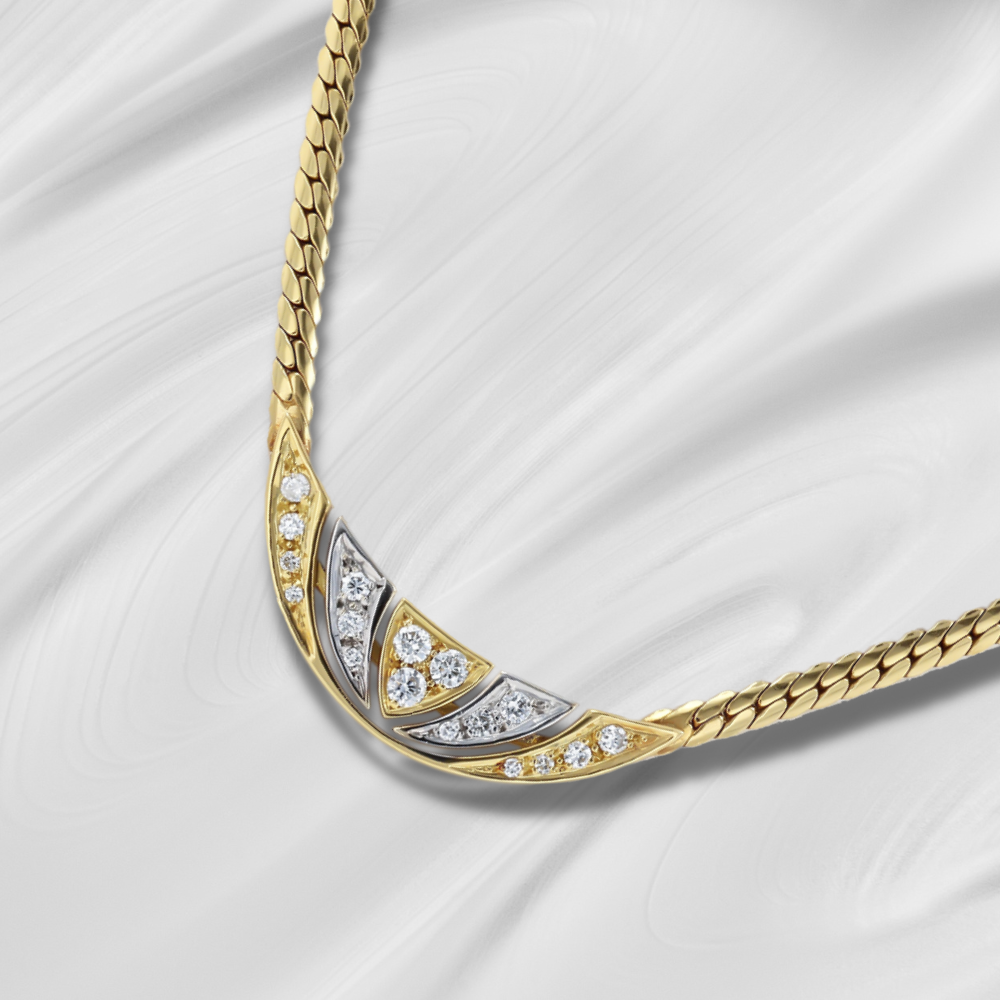

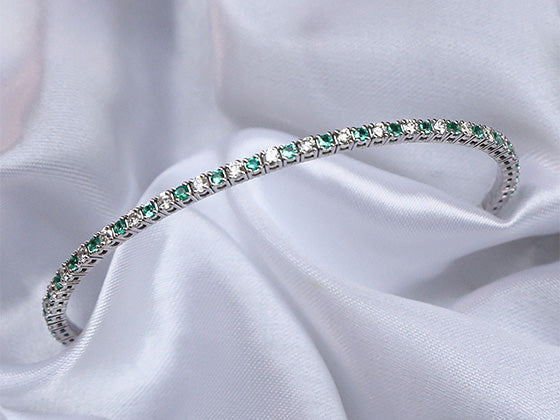

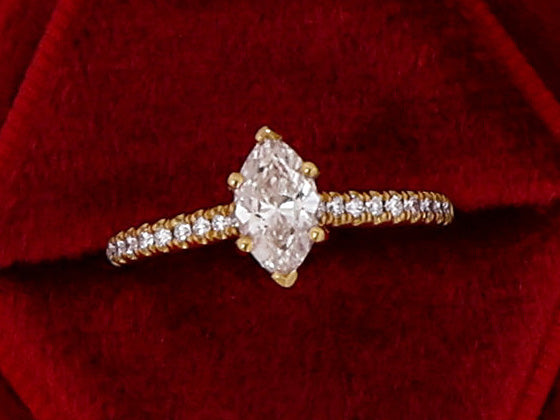
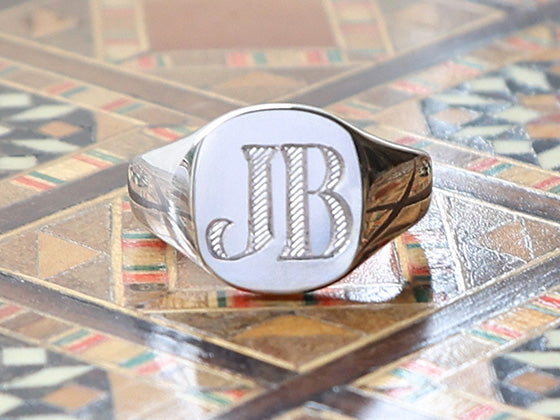
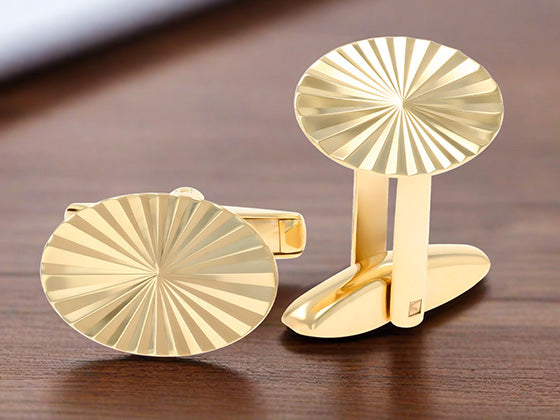
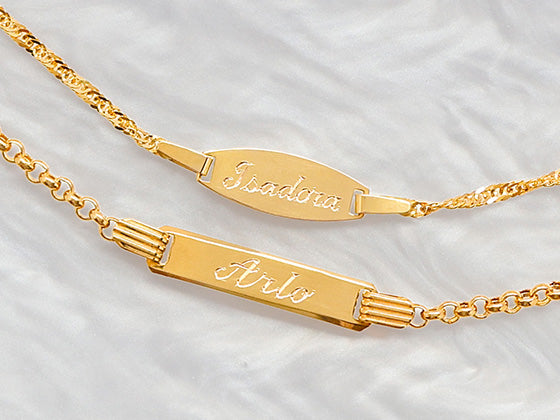
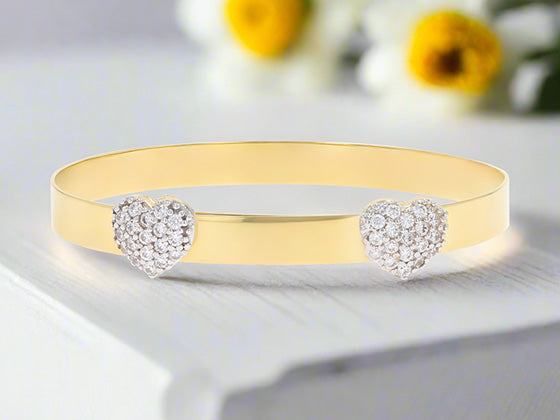
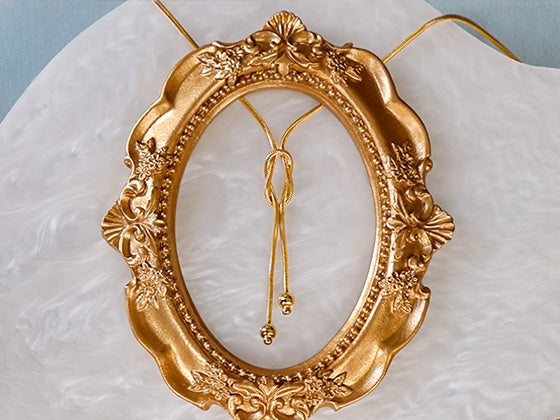
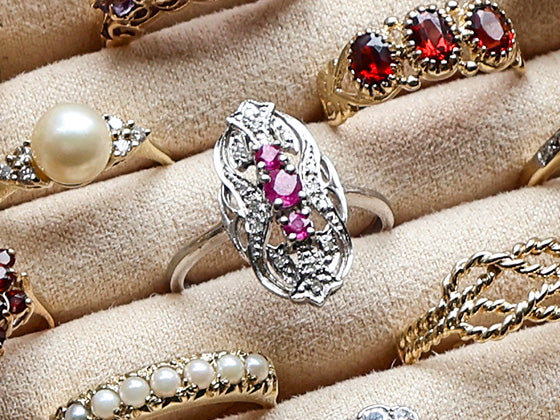
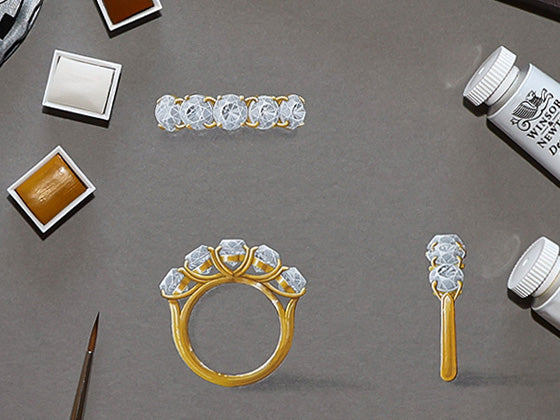
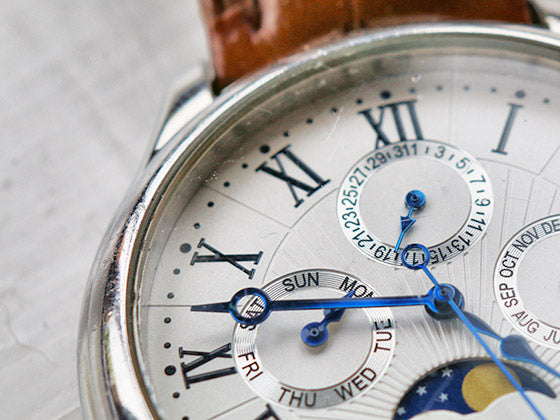
 Contact Us
Contact Us